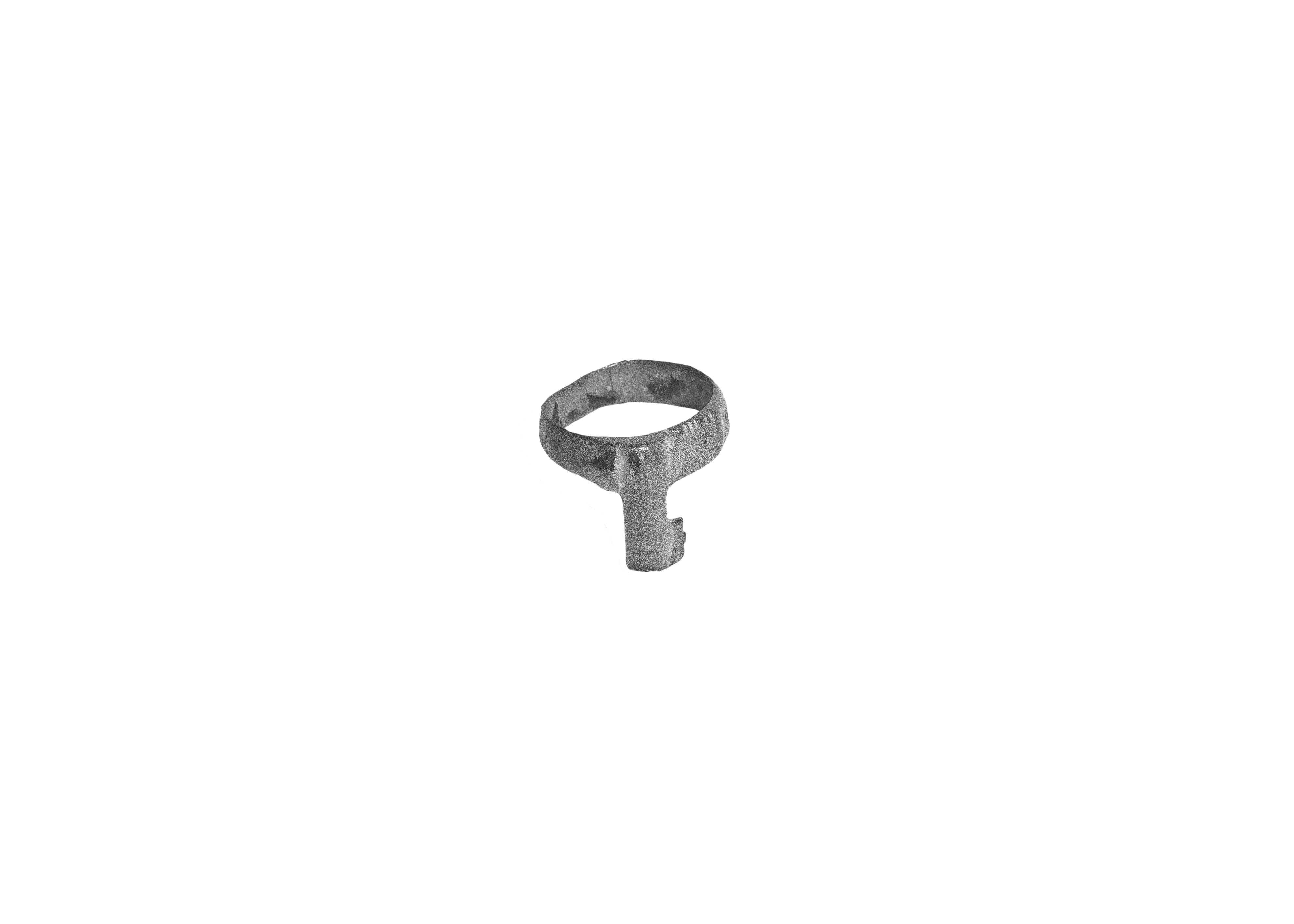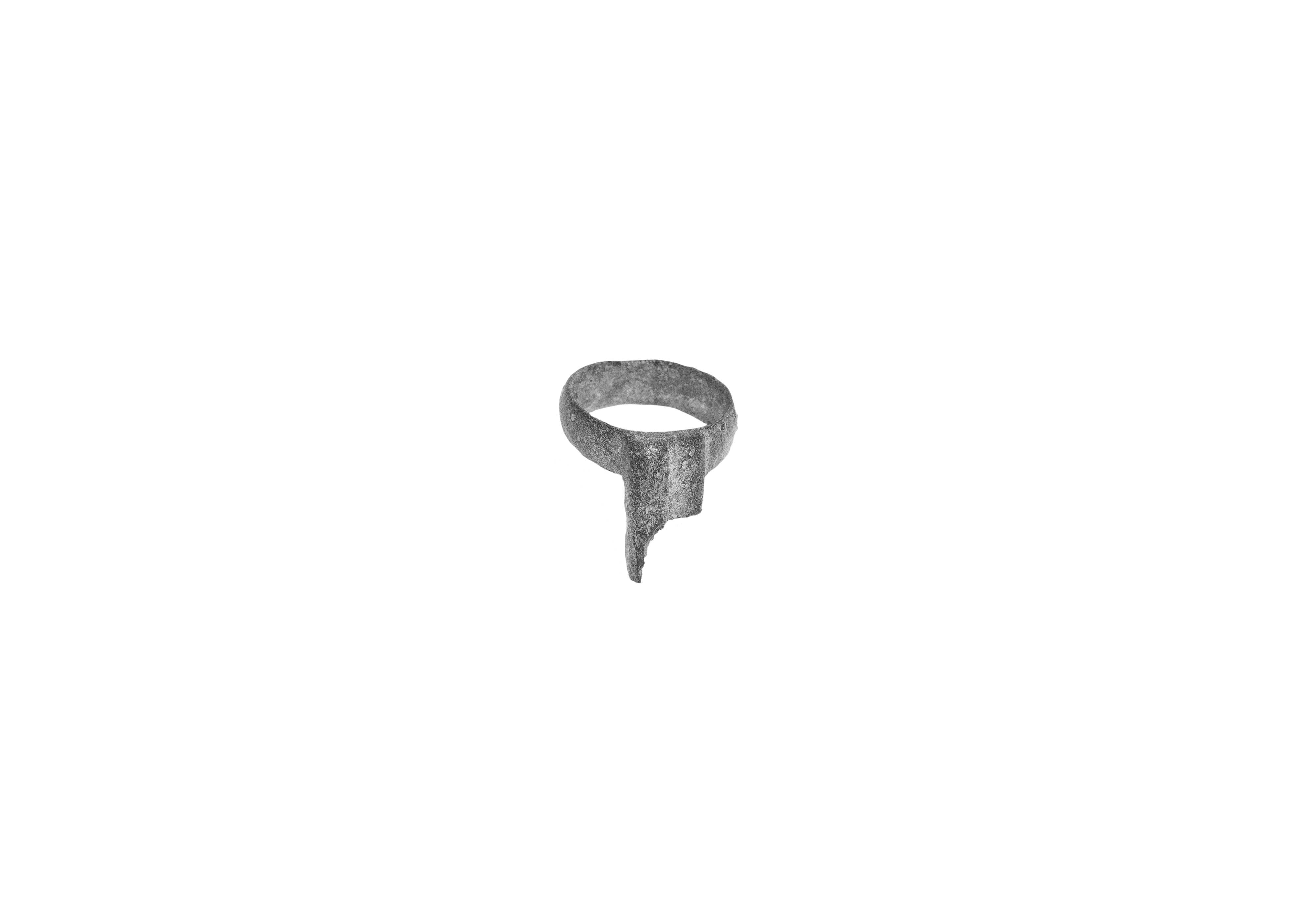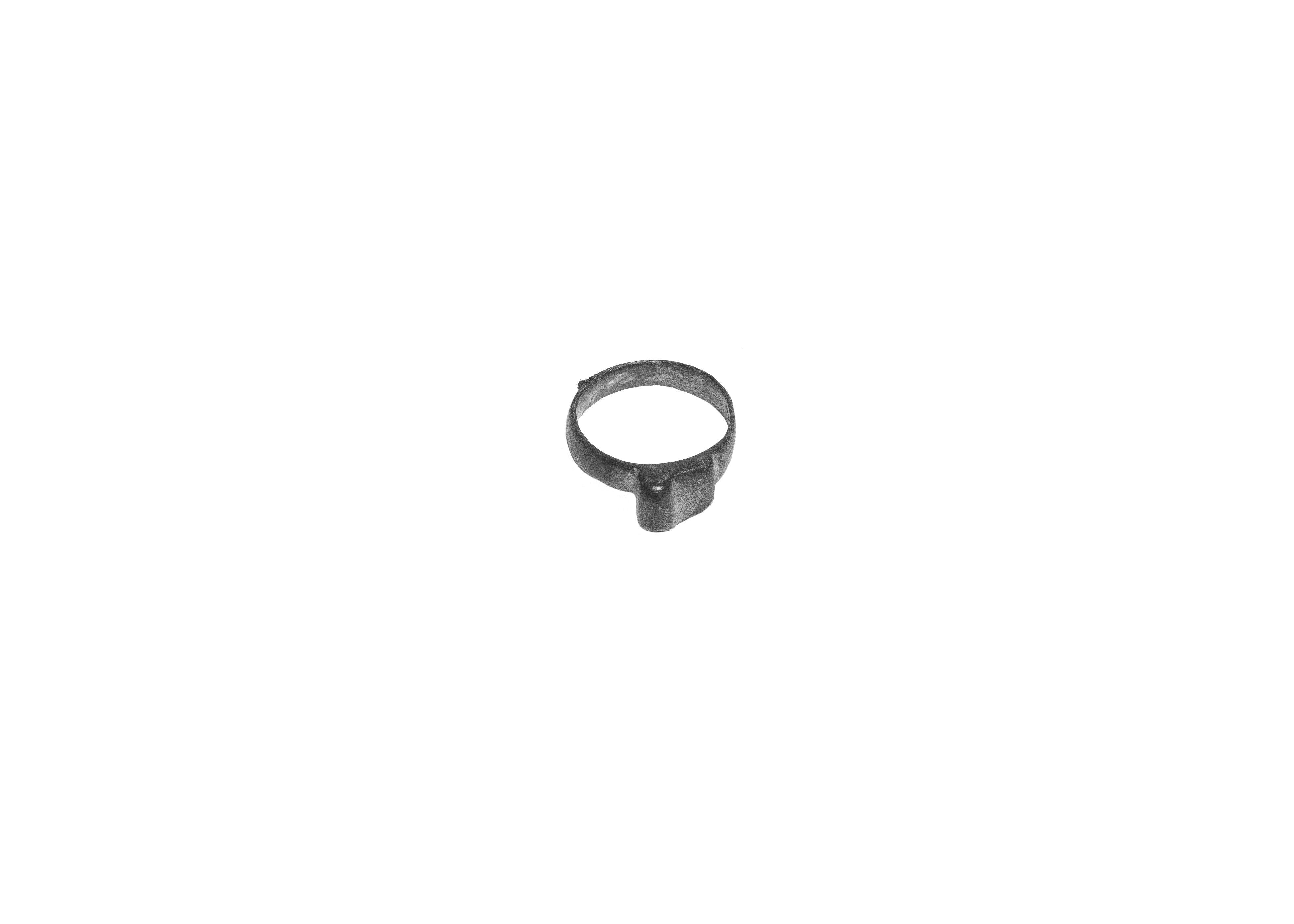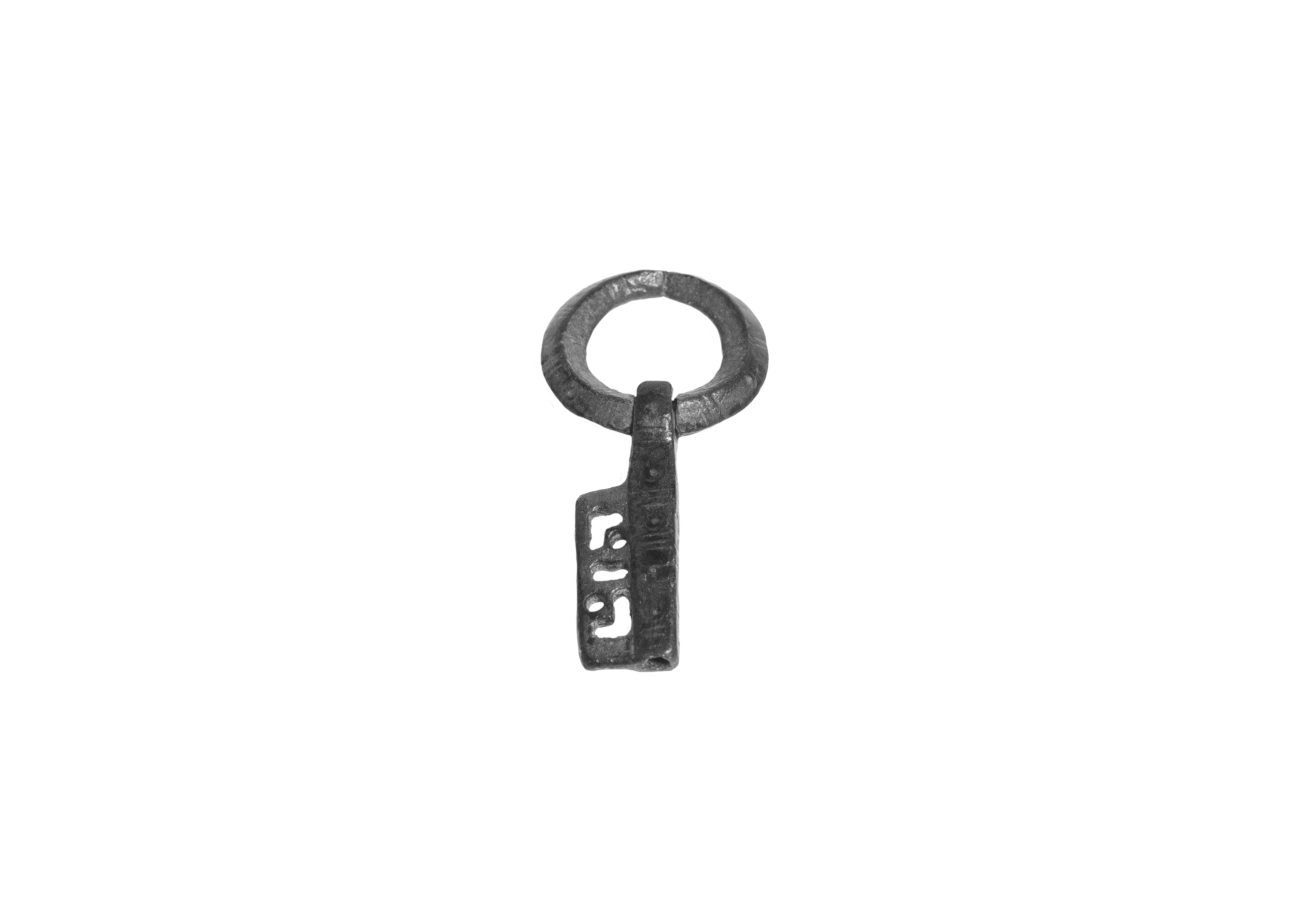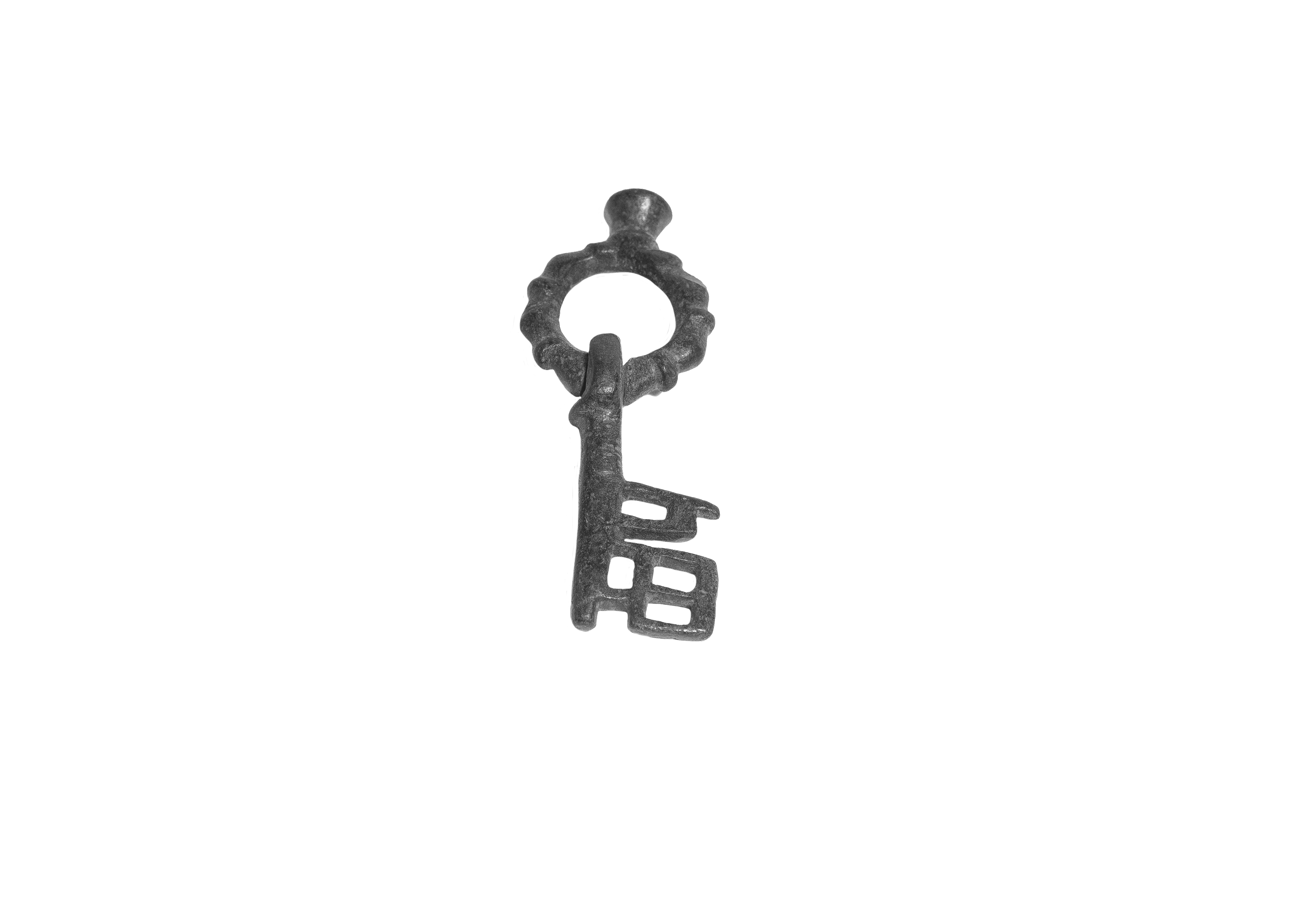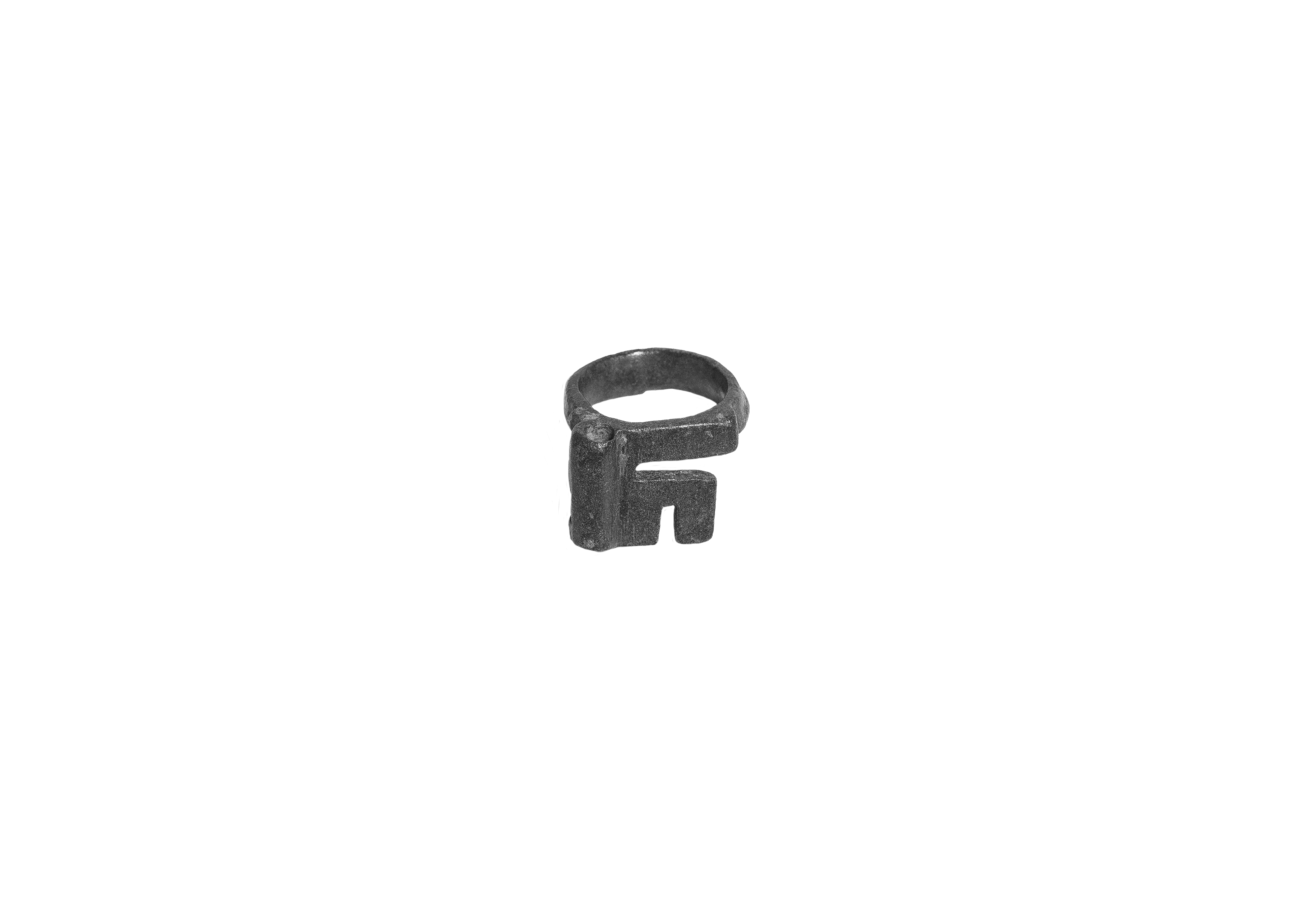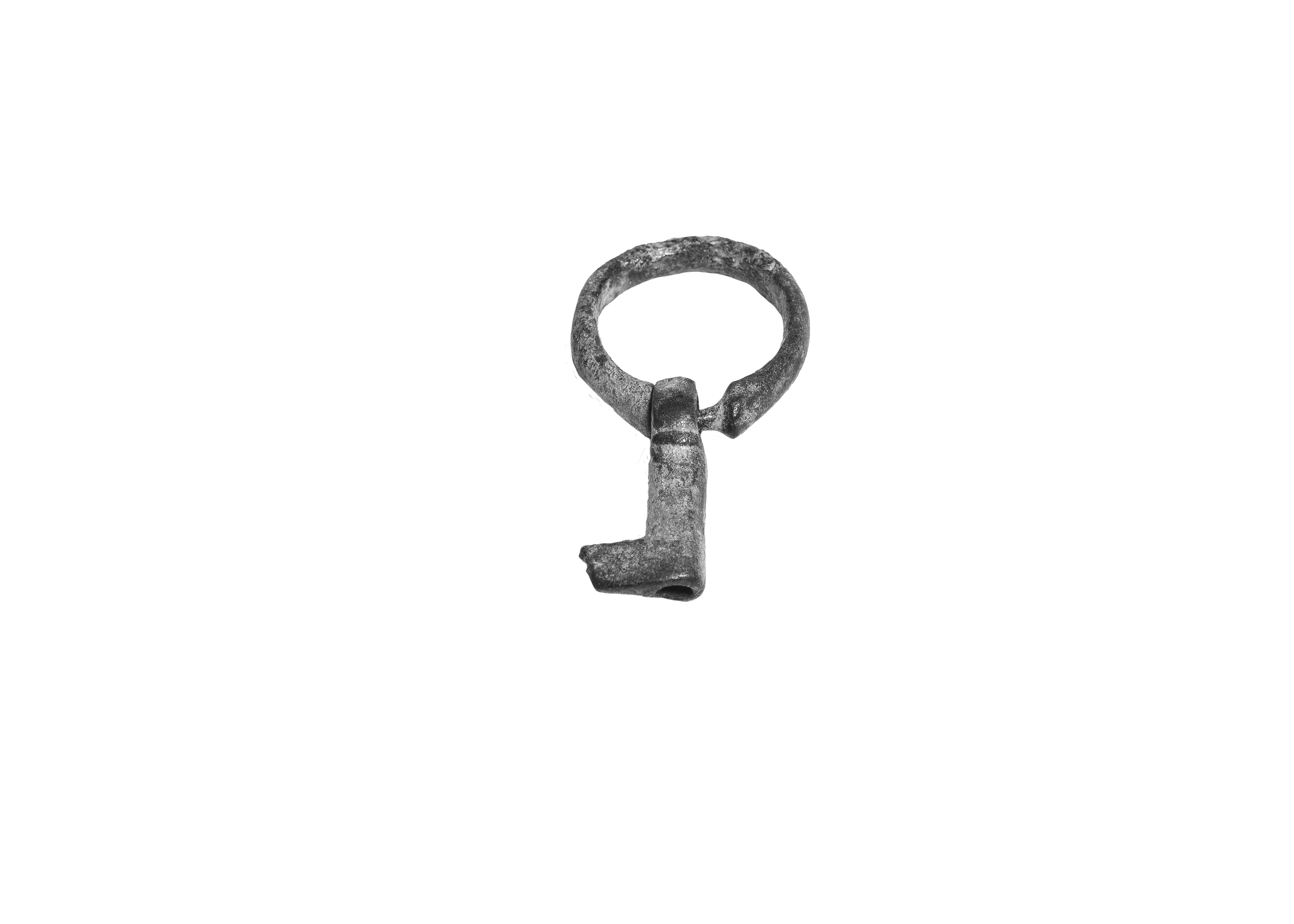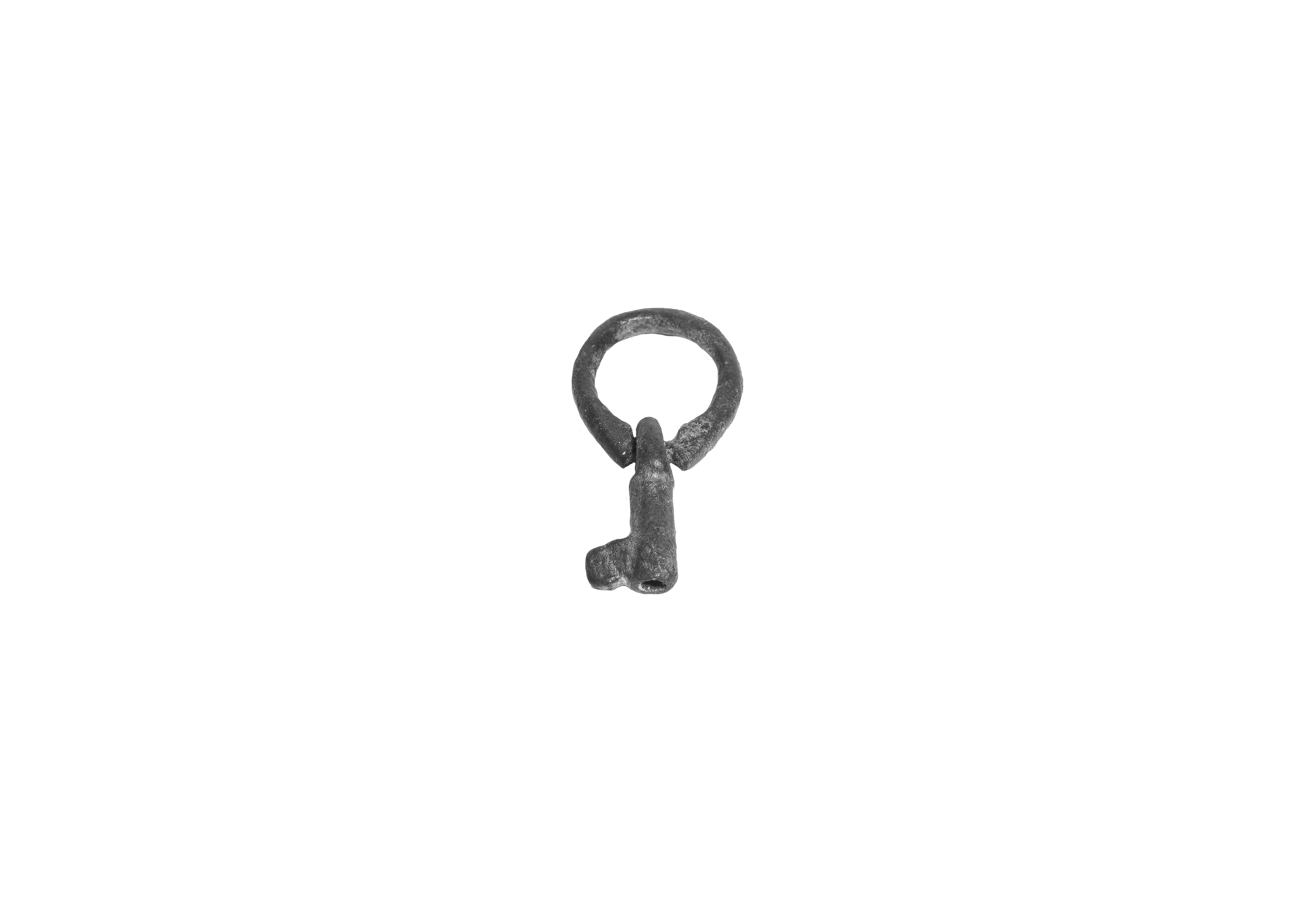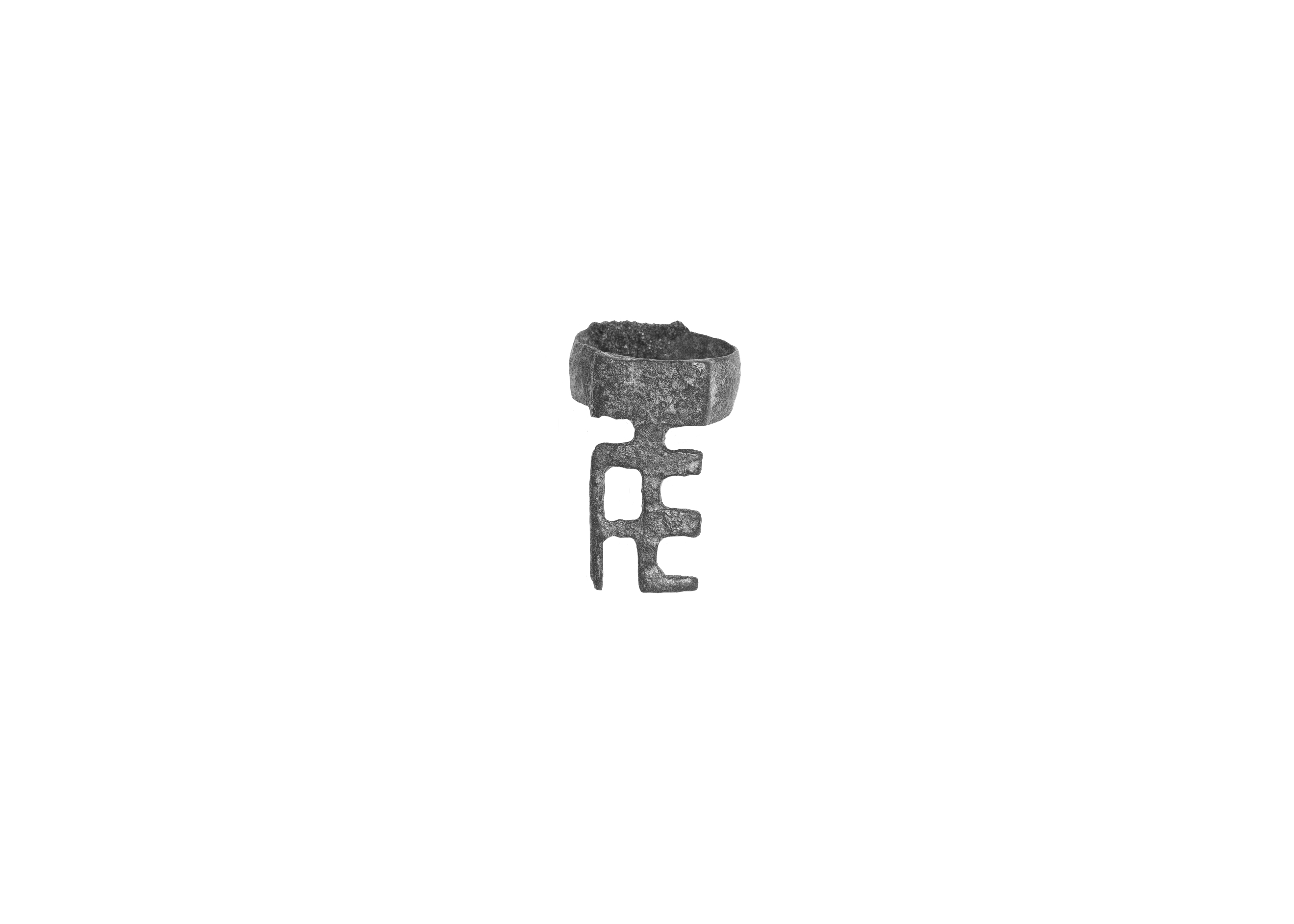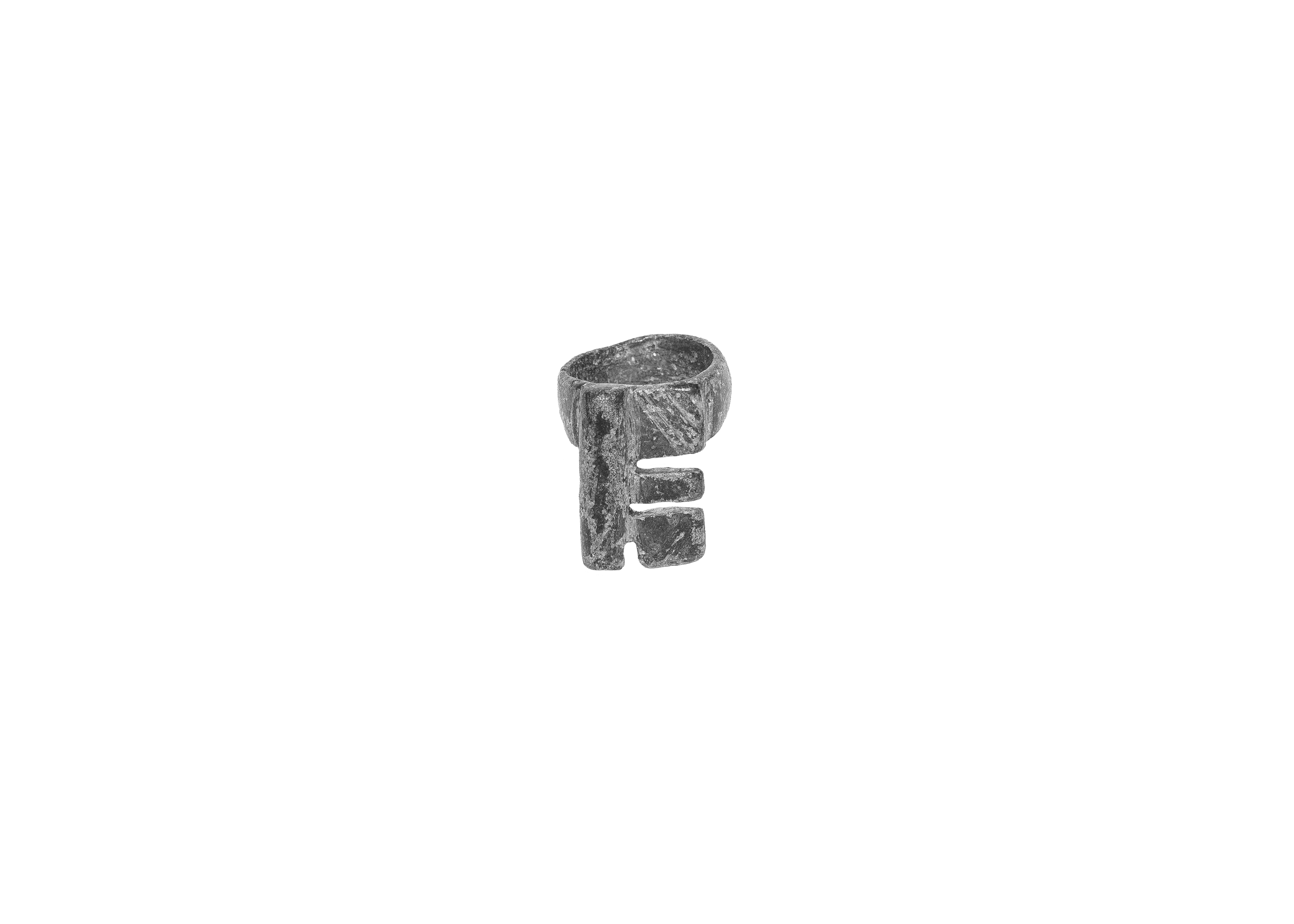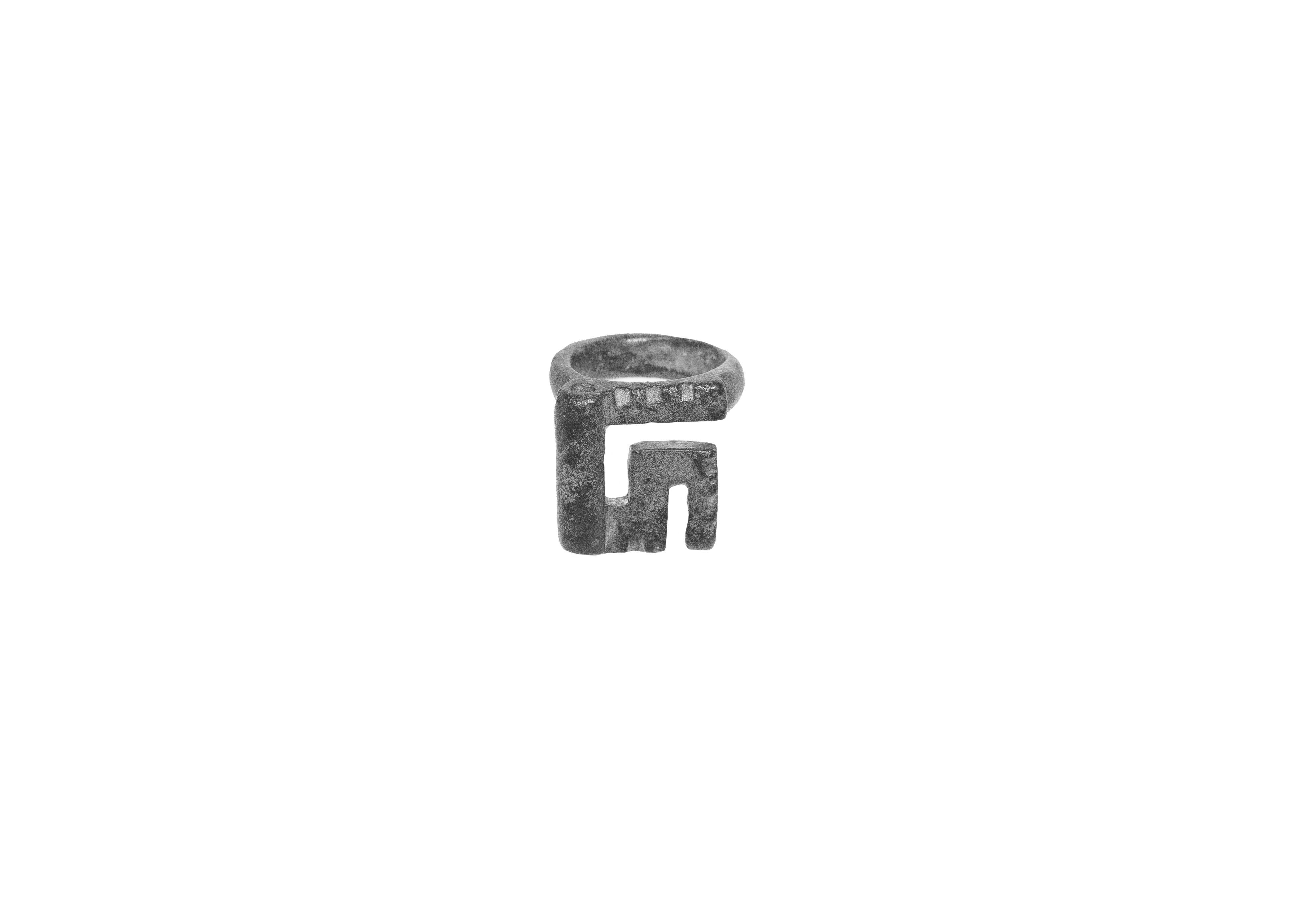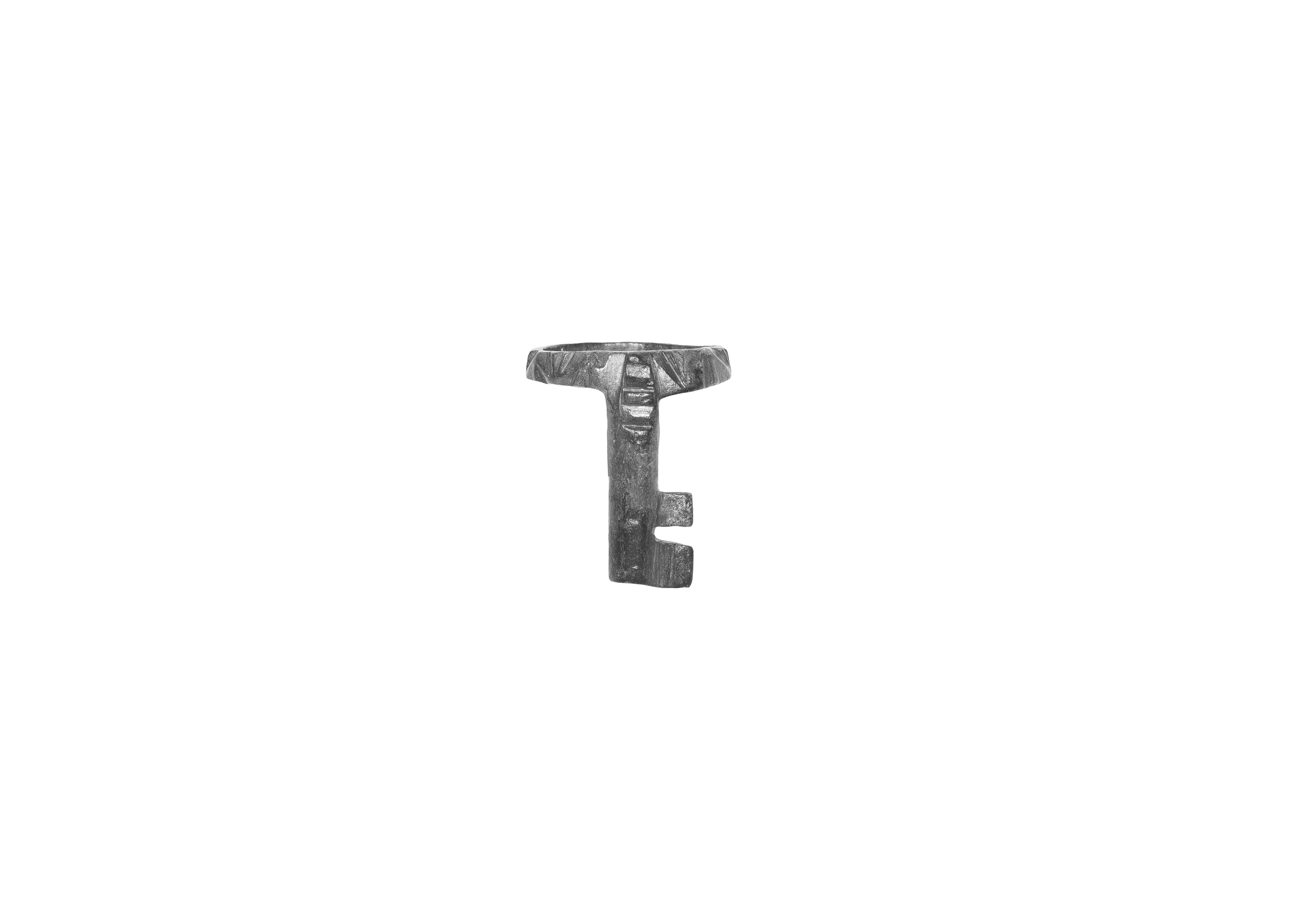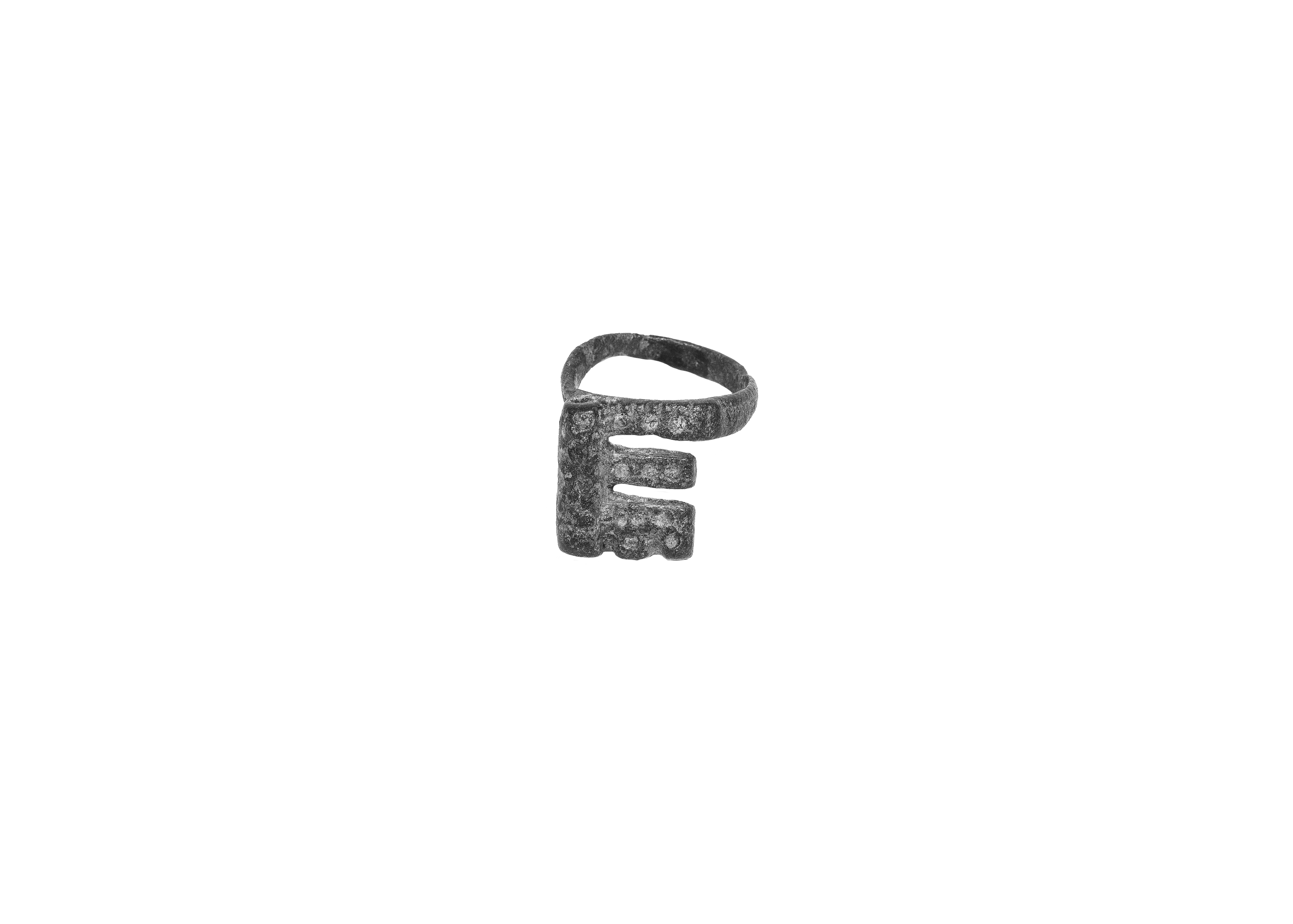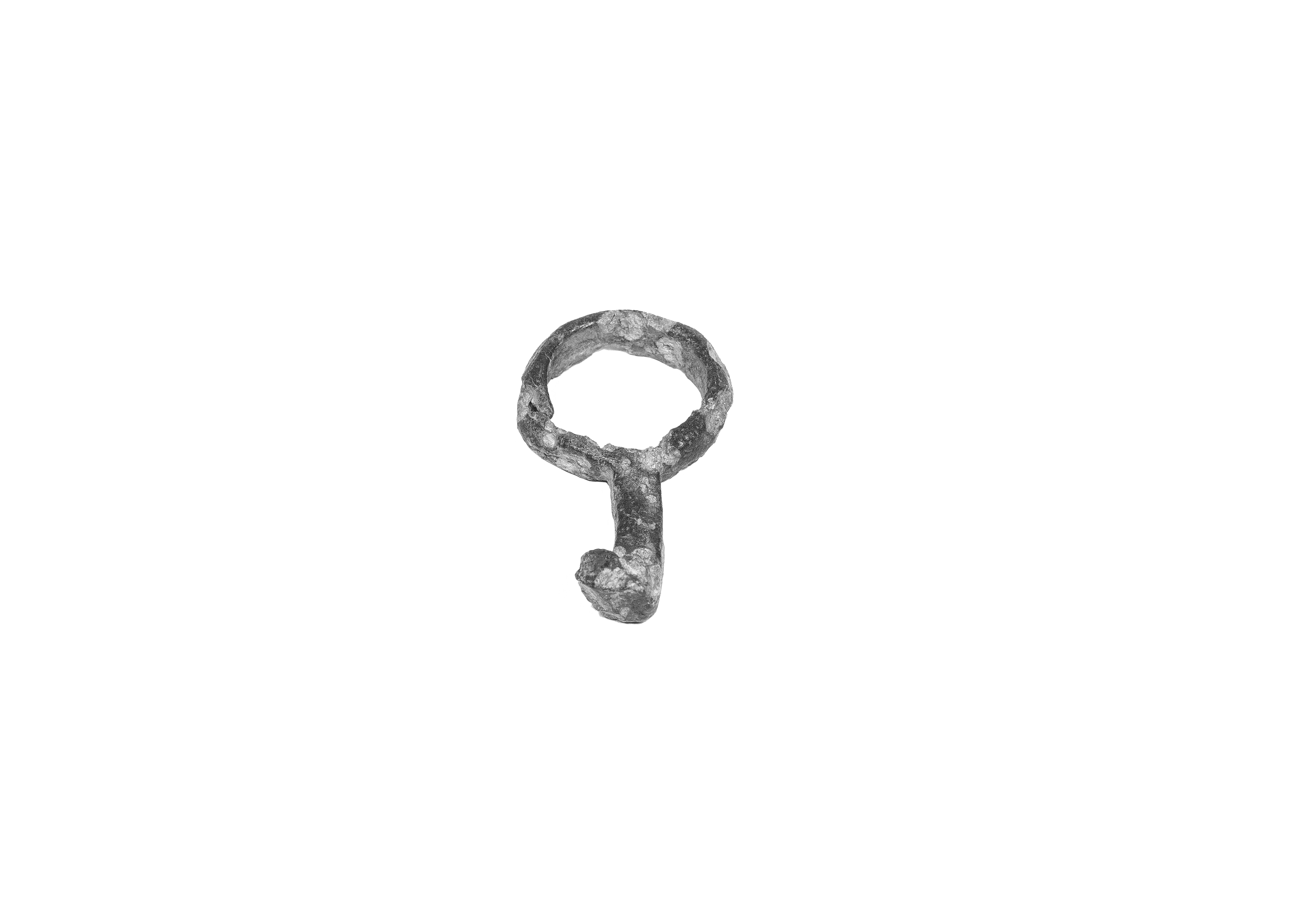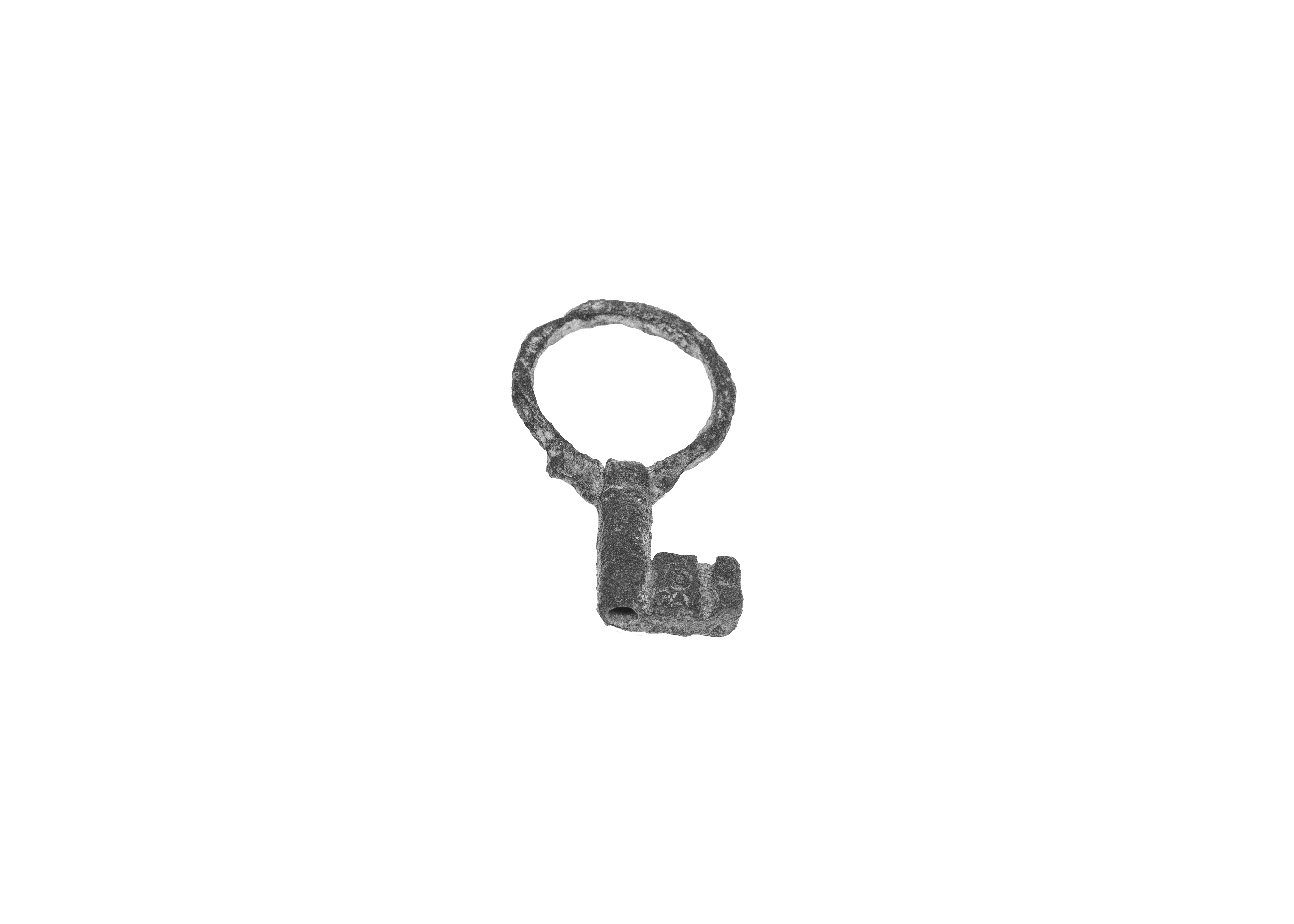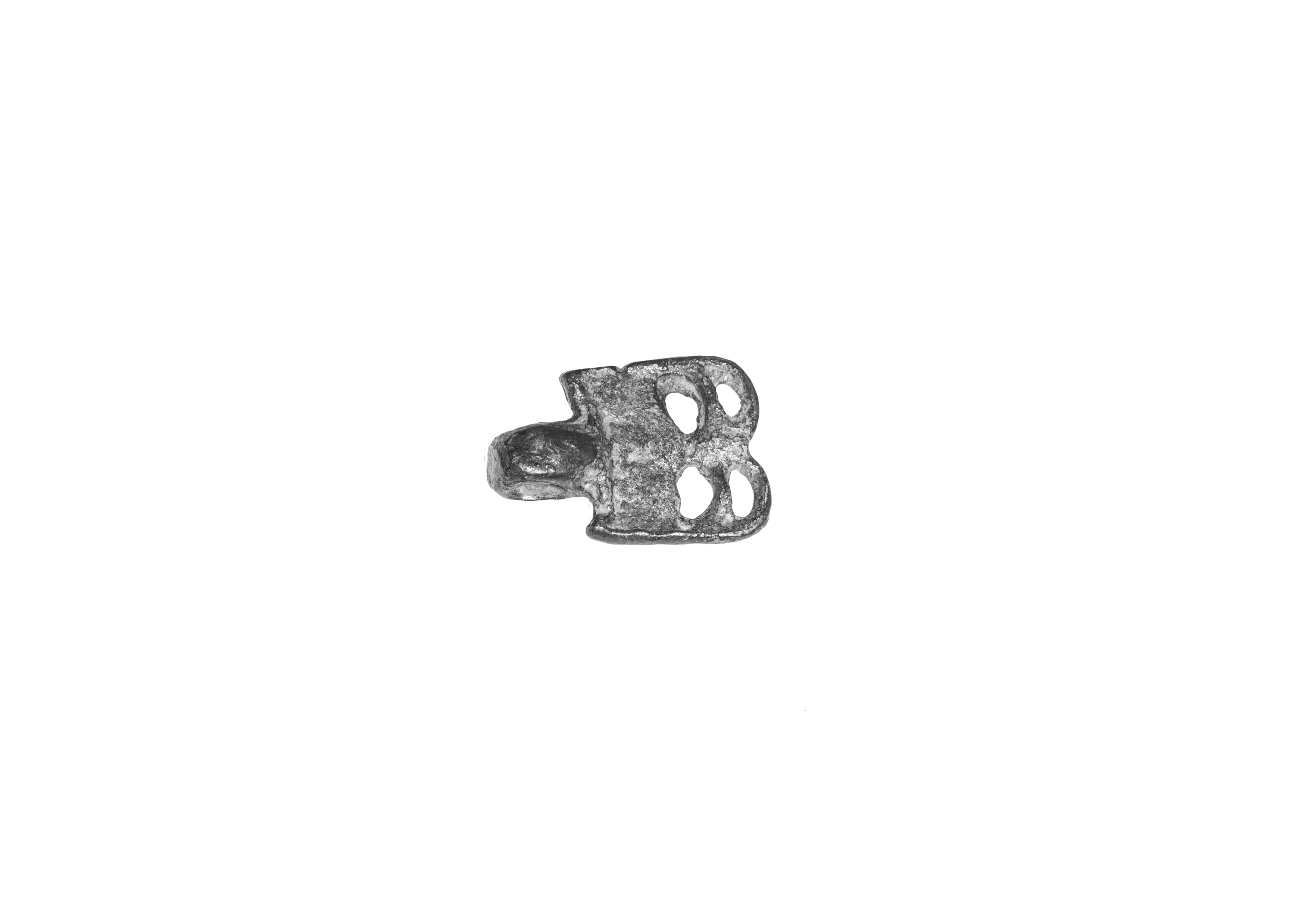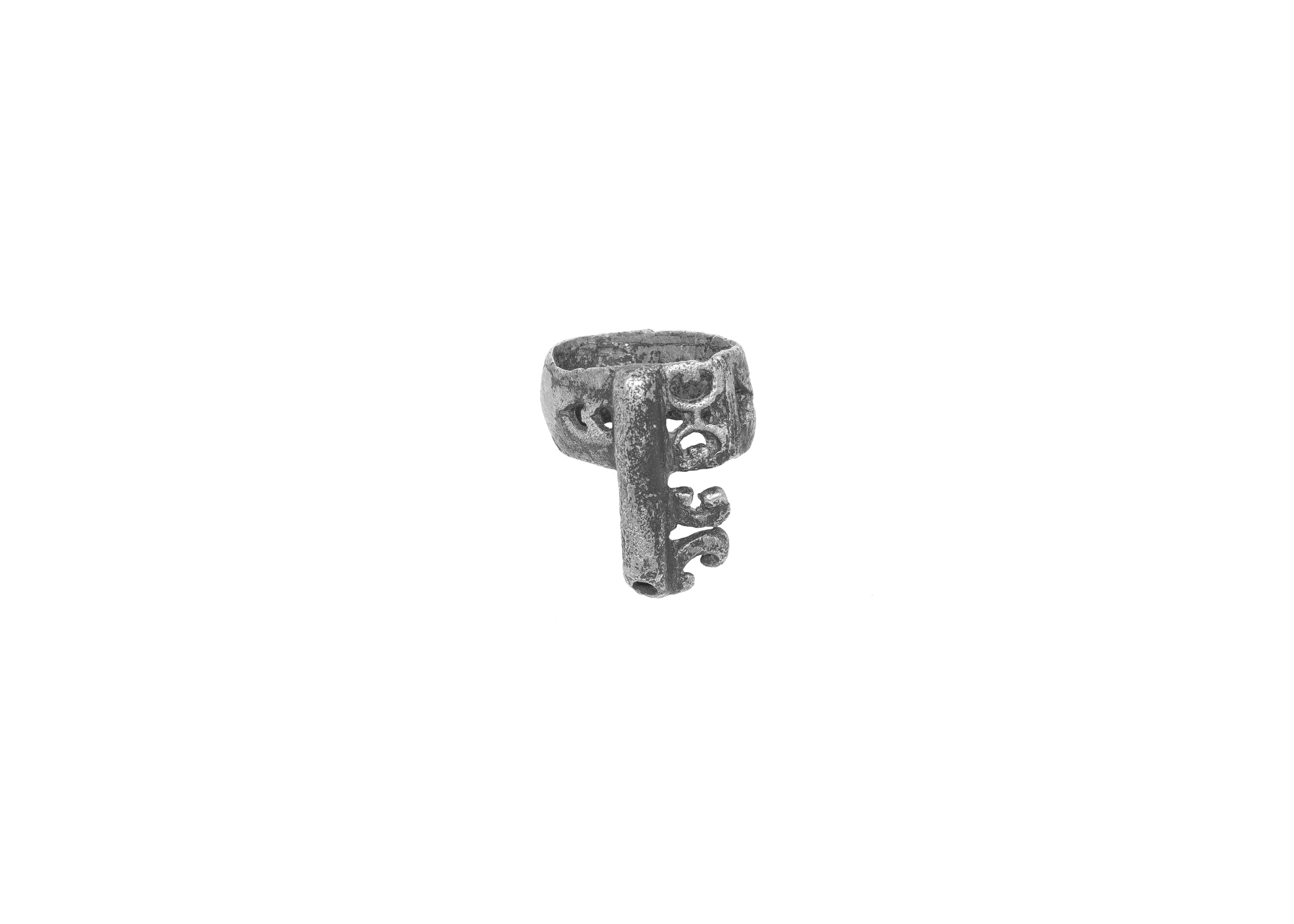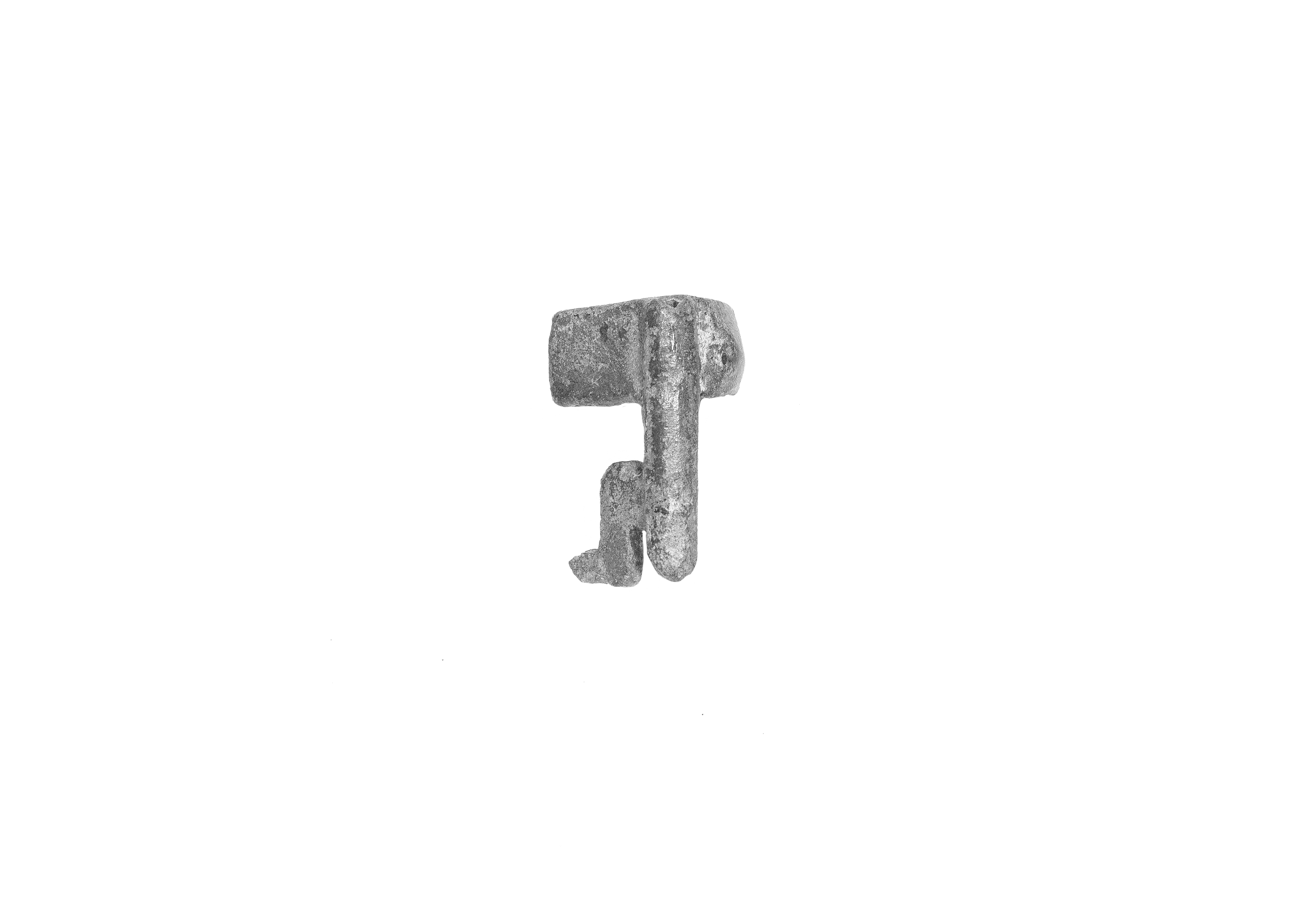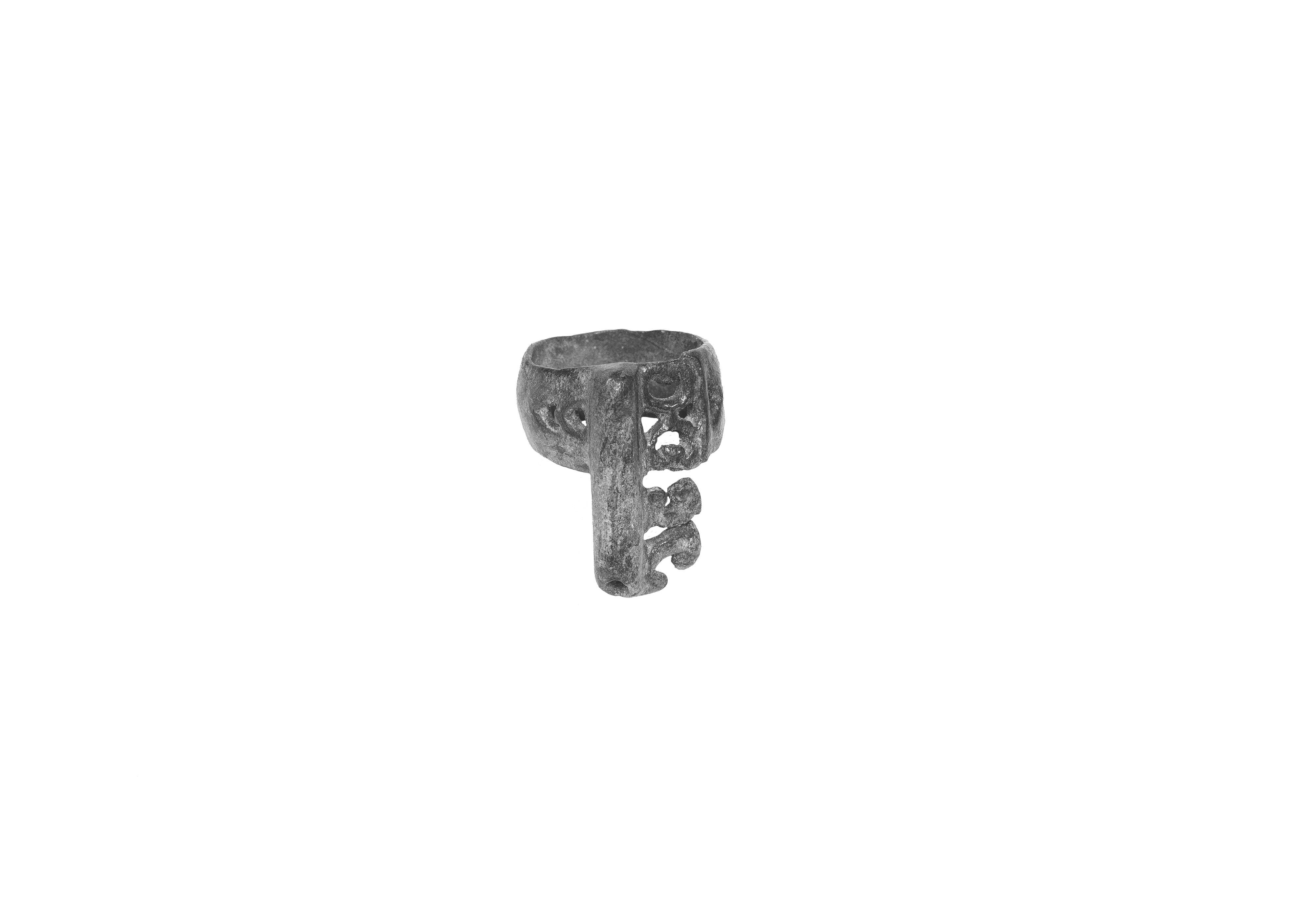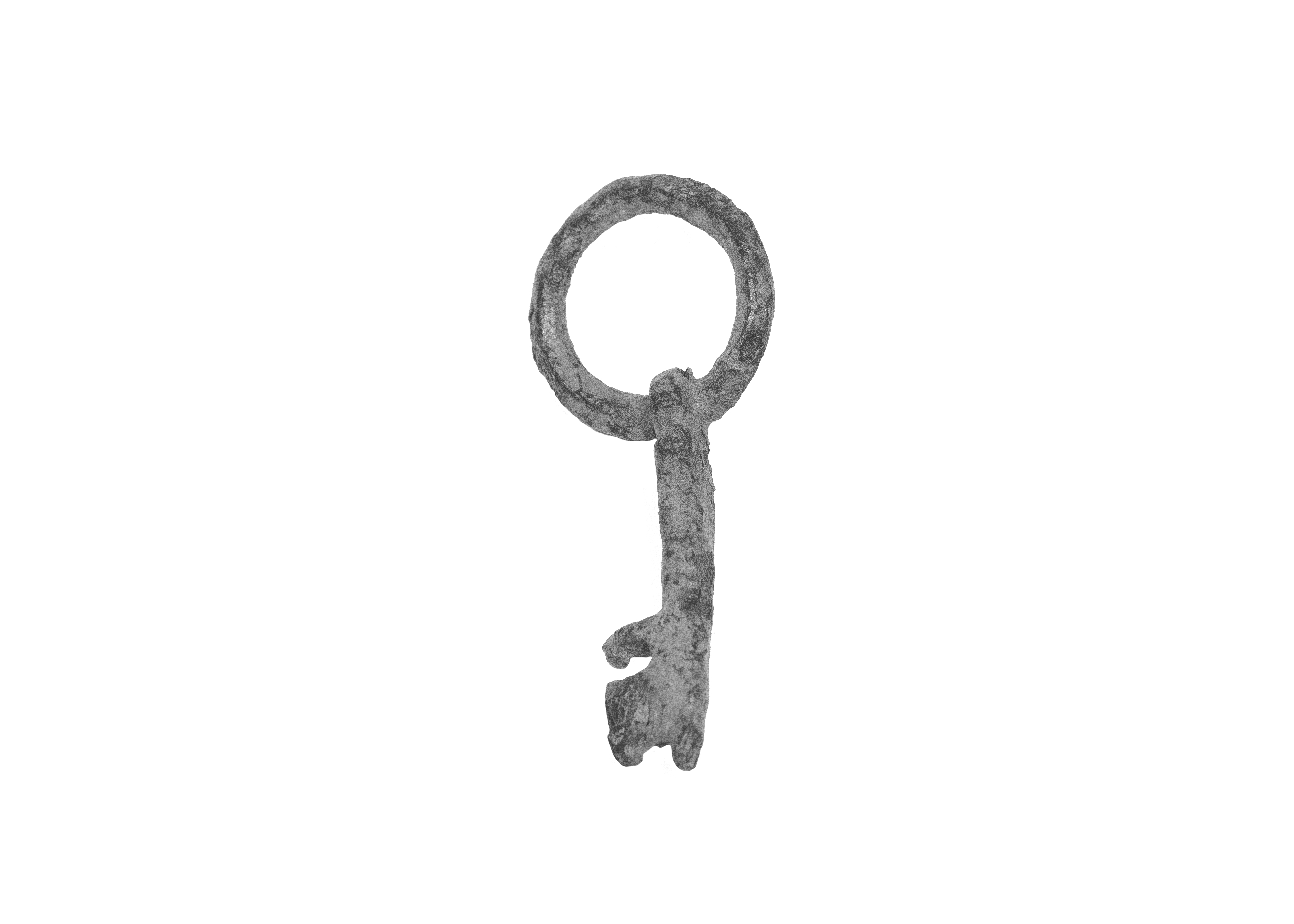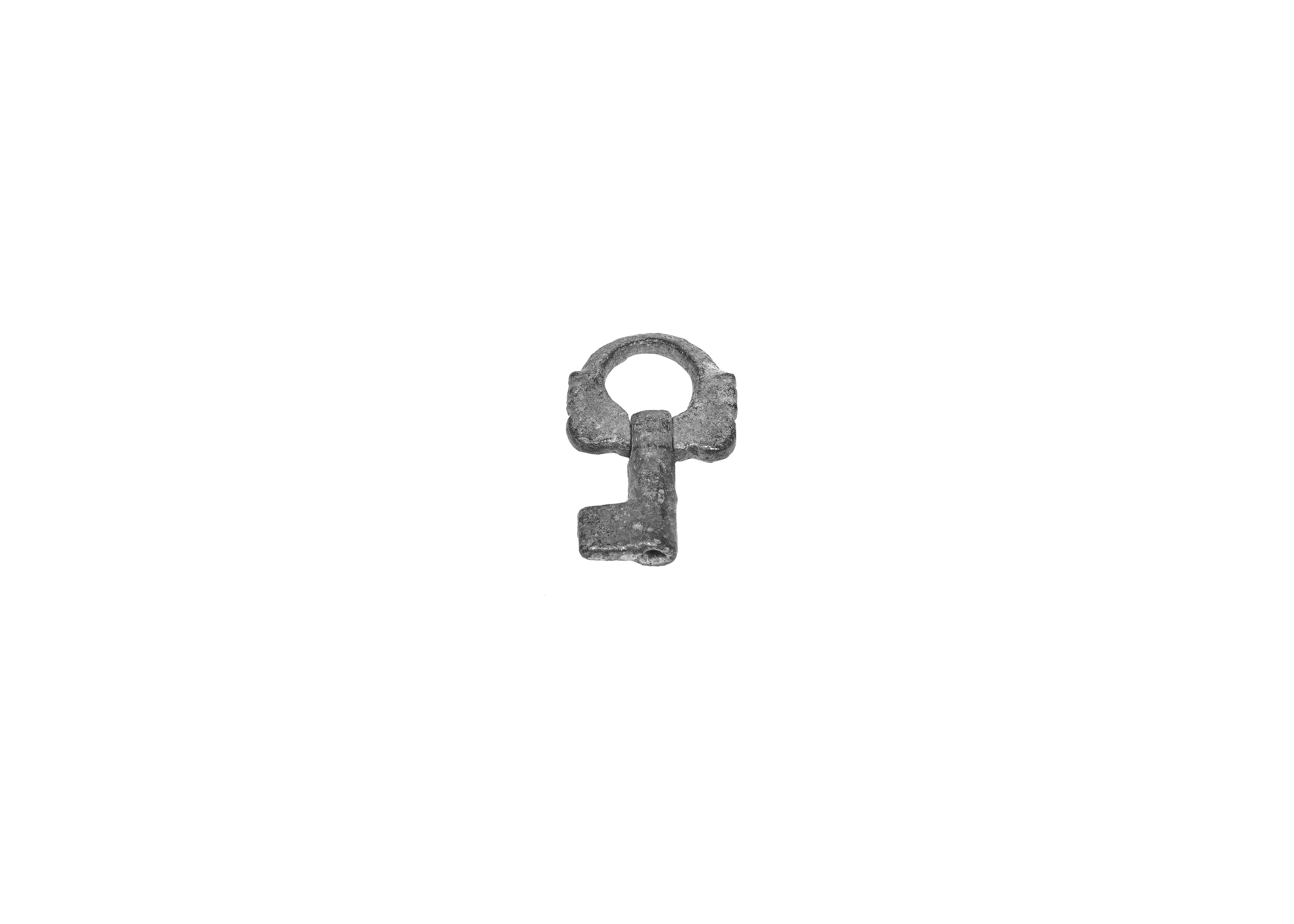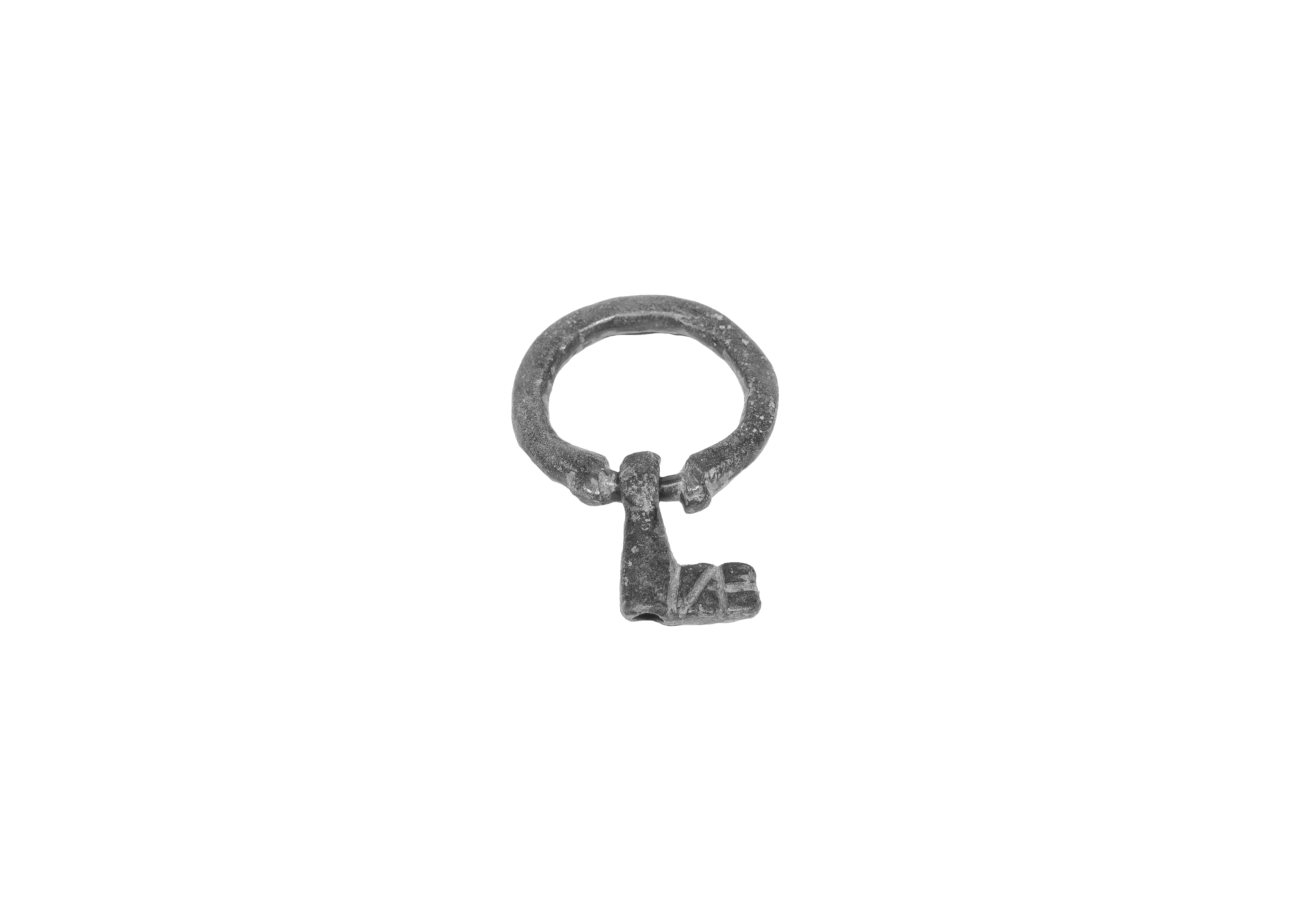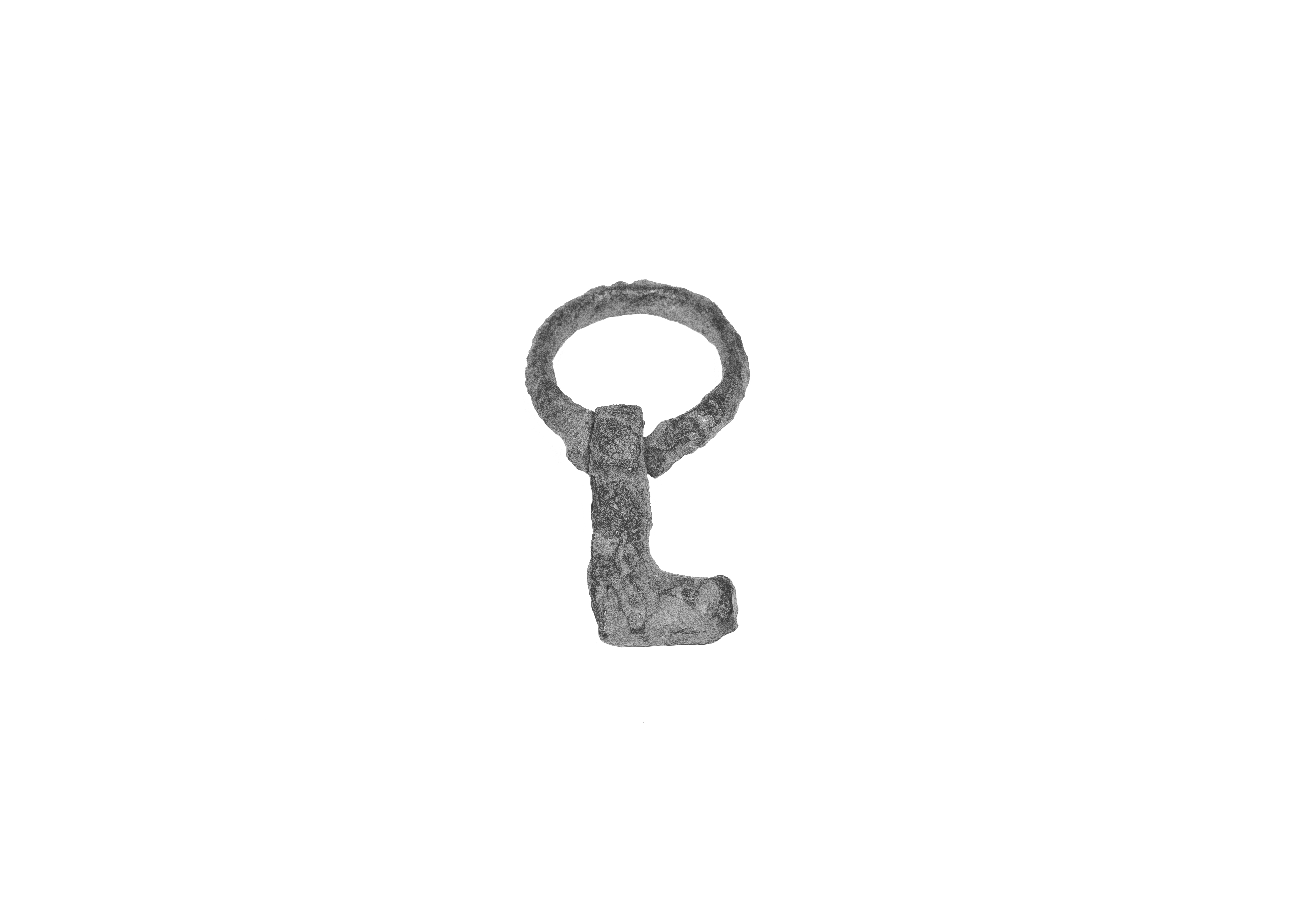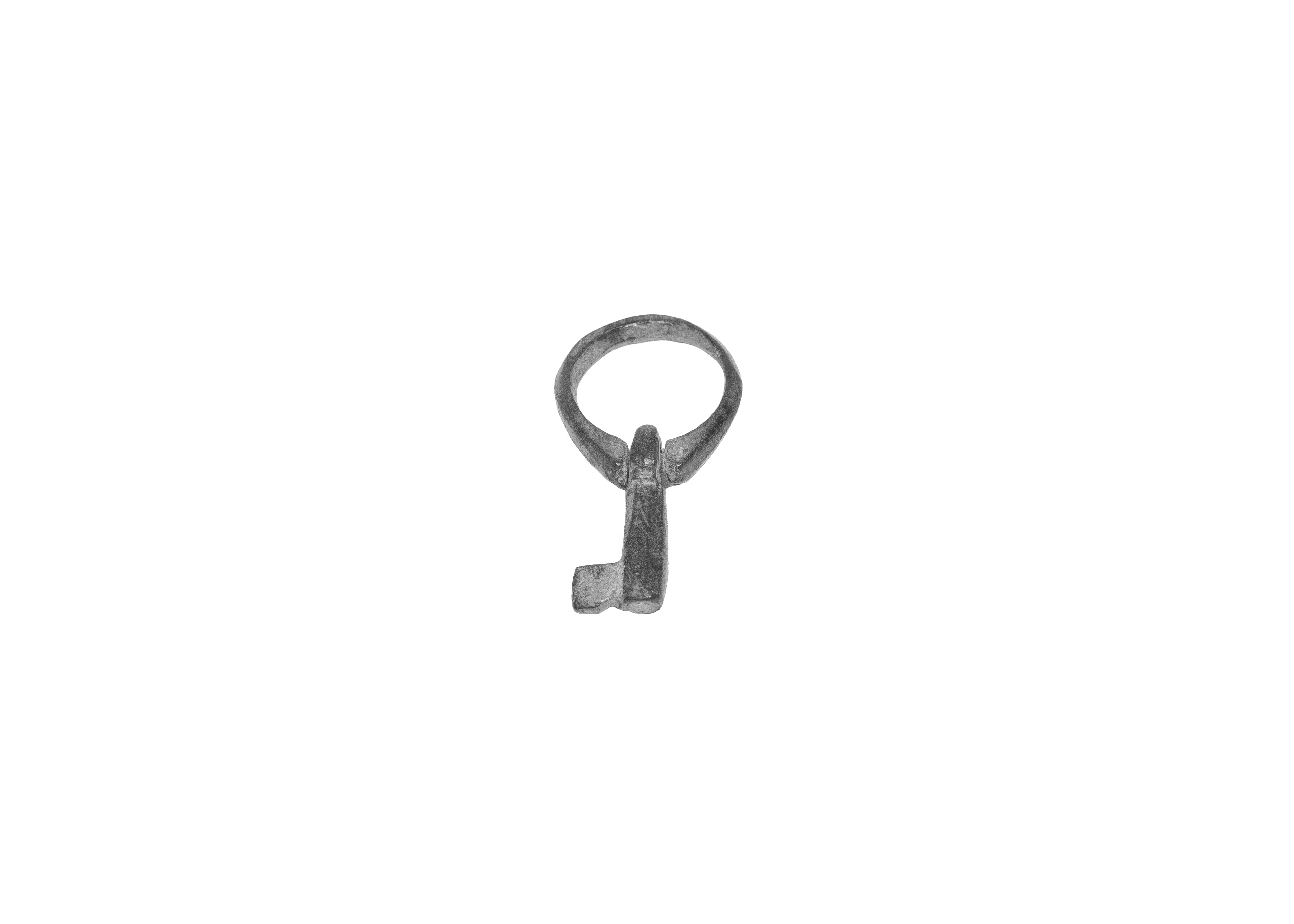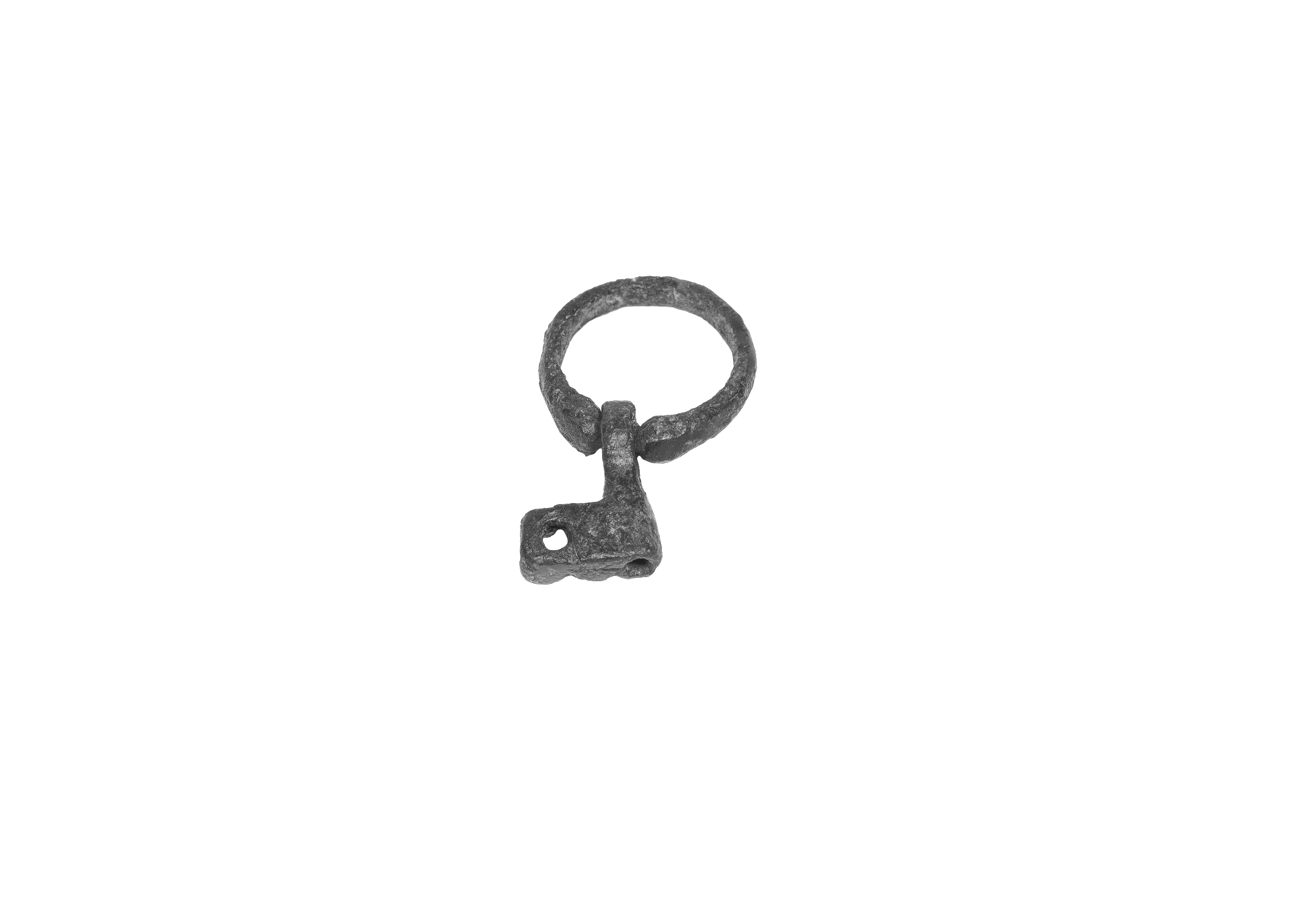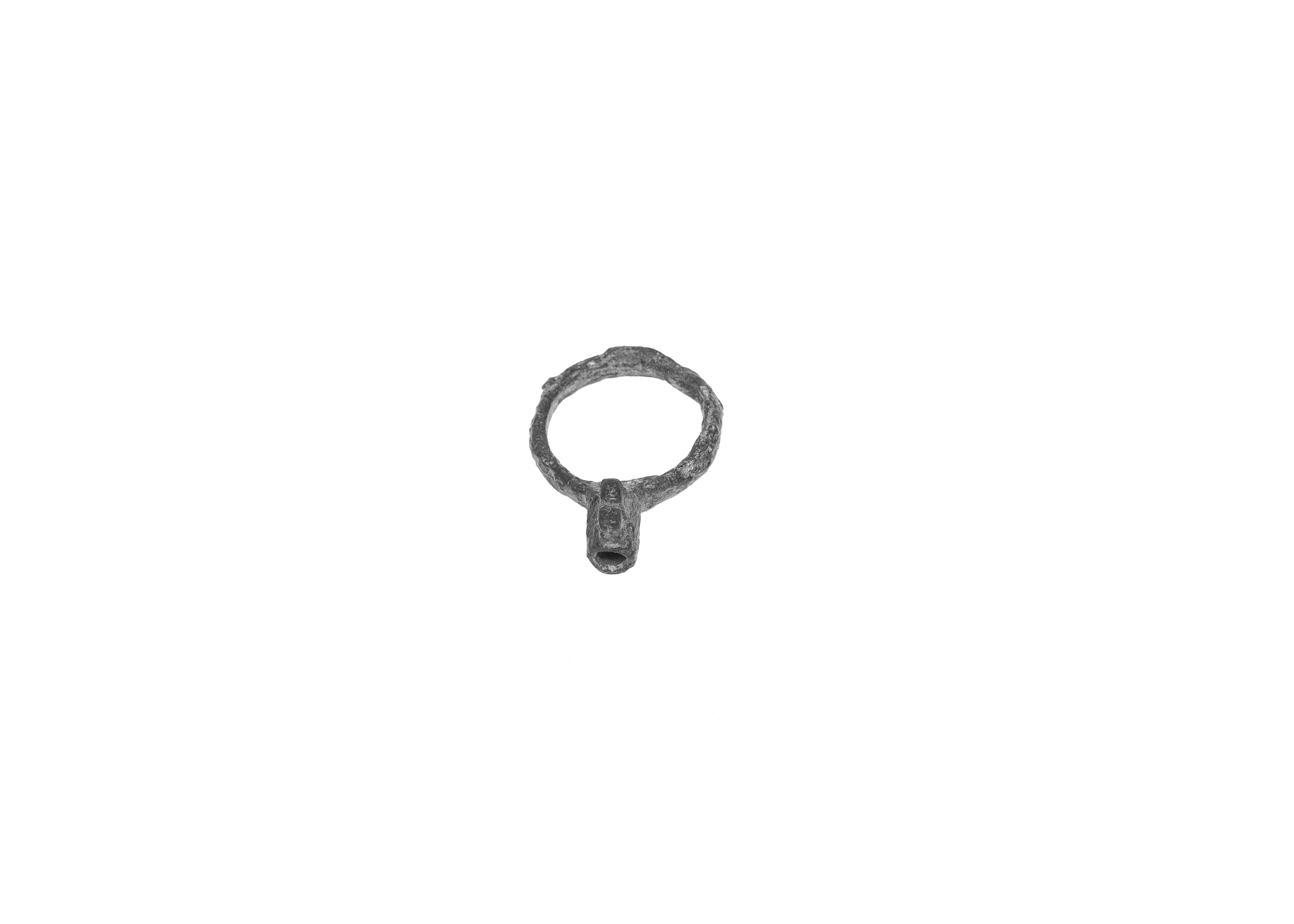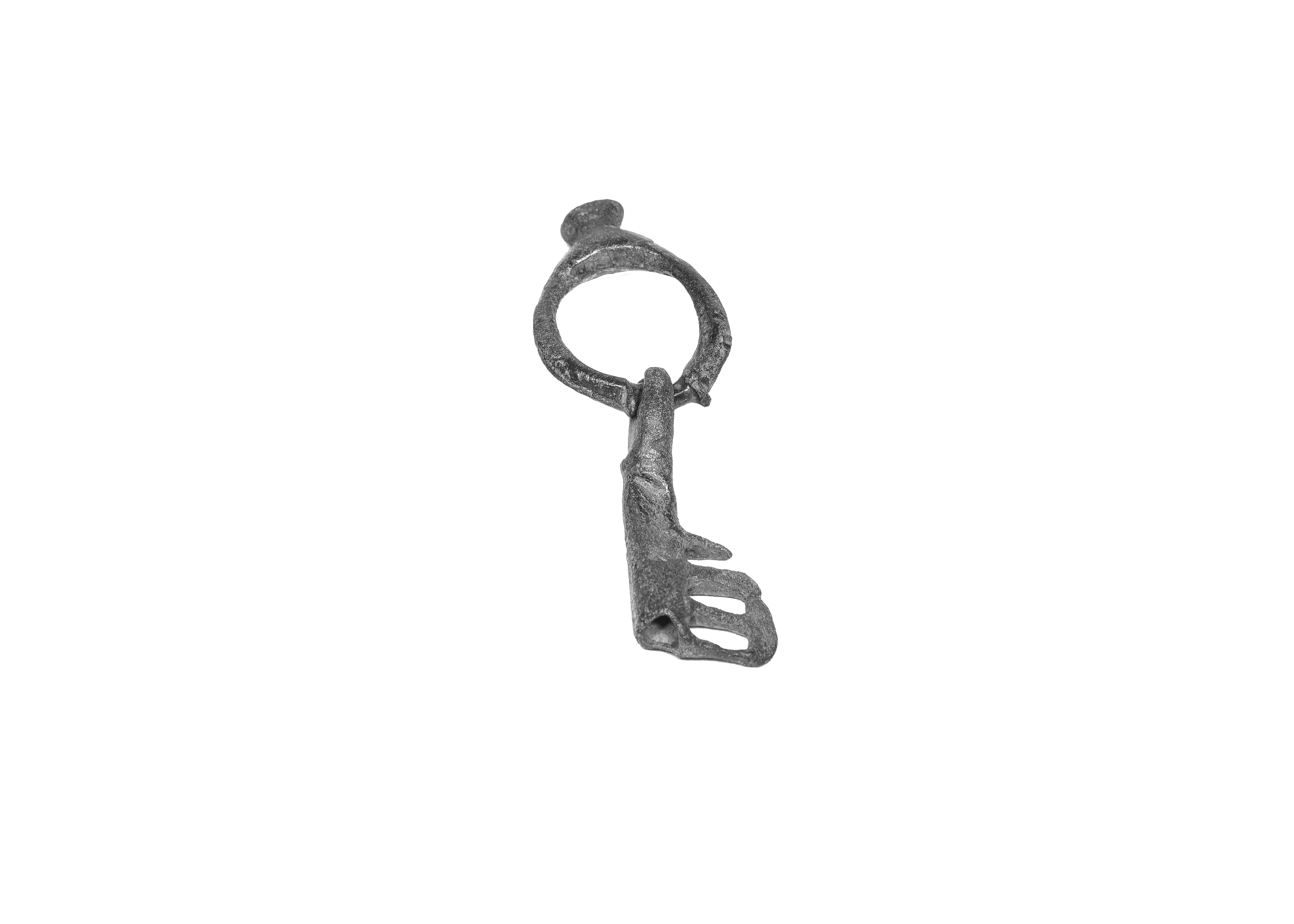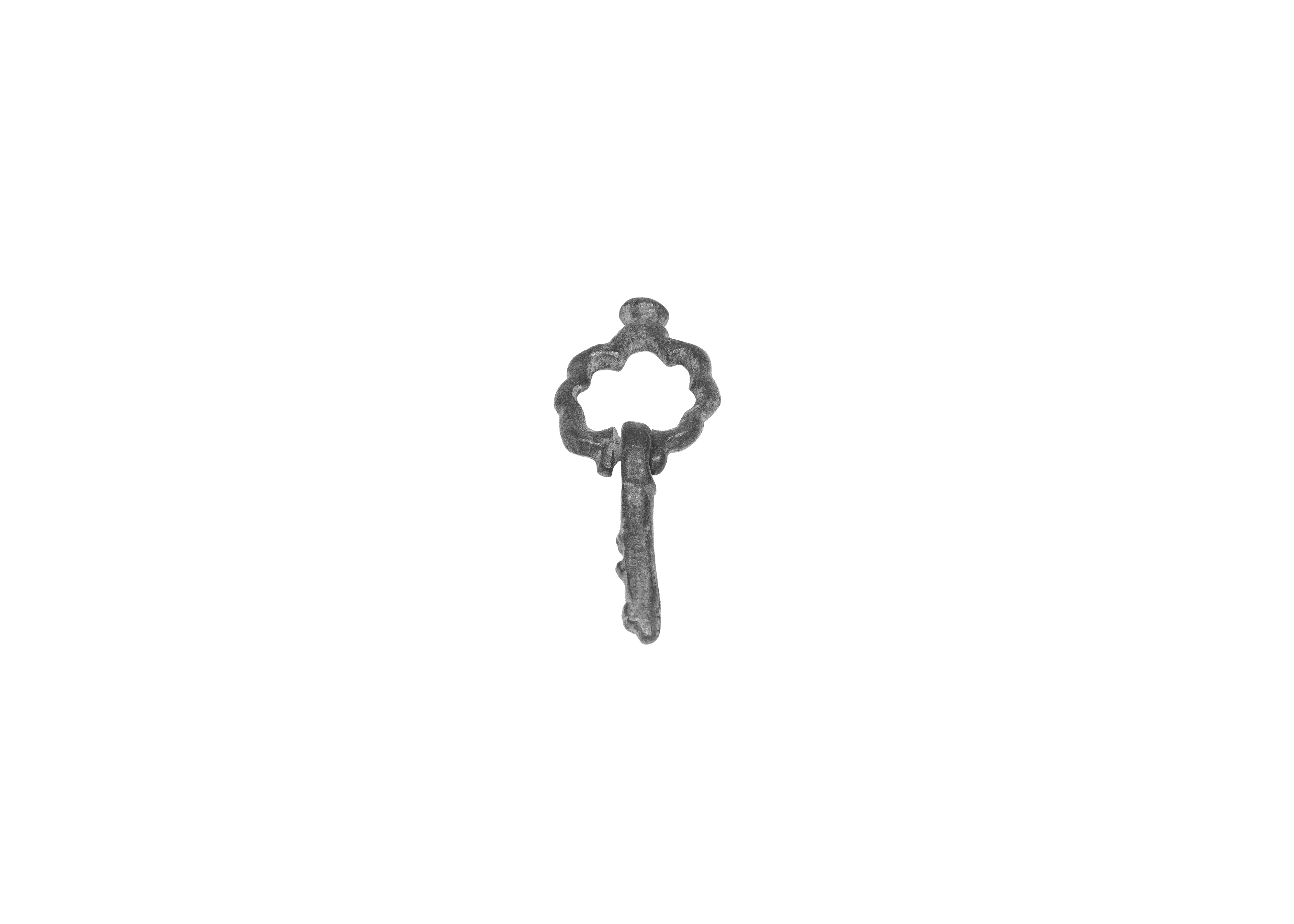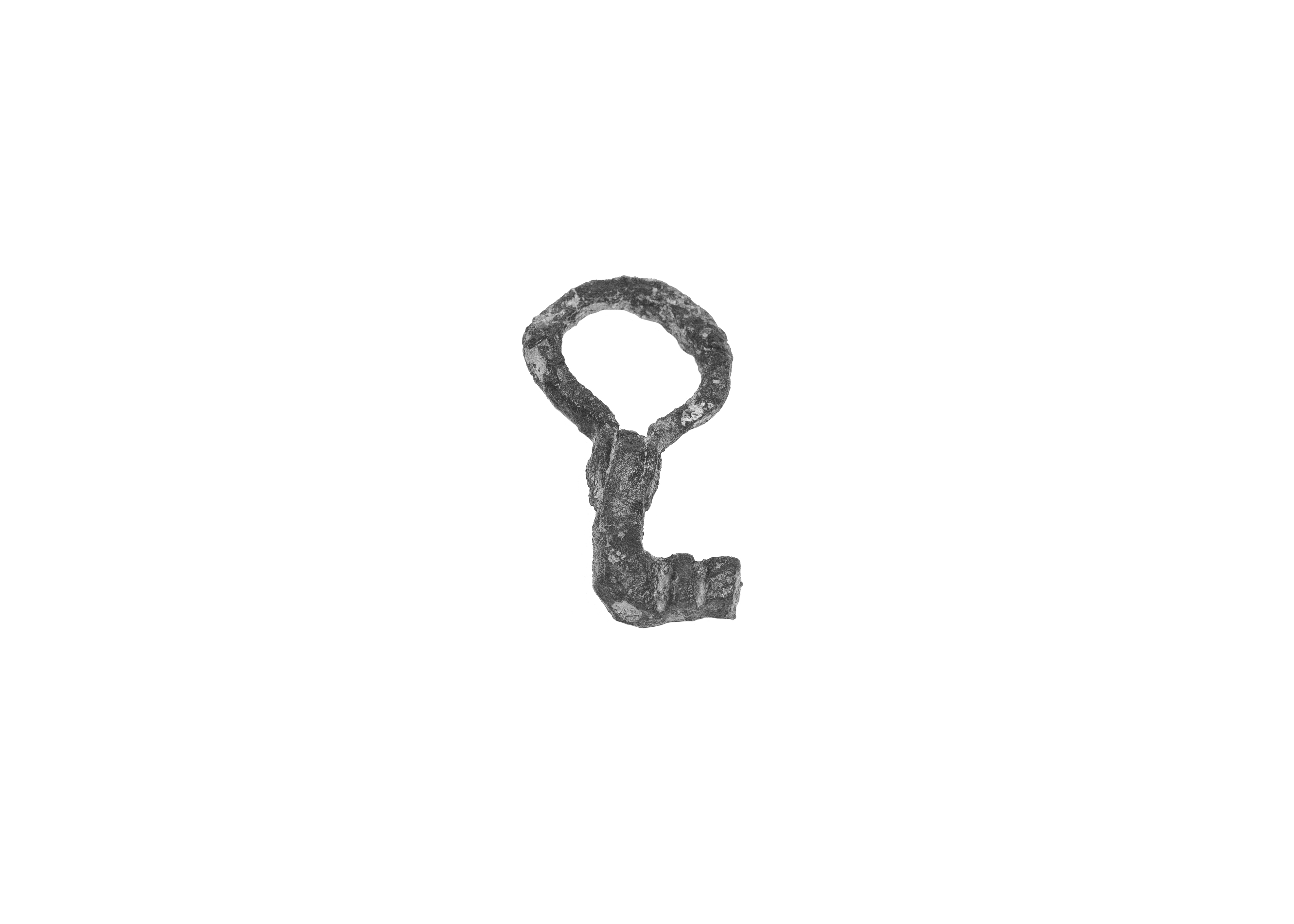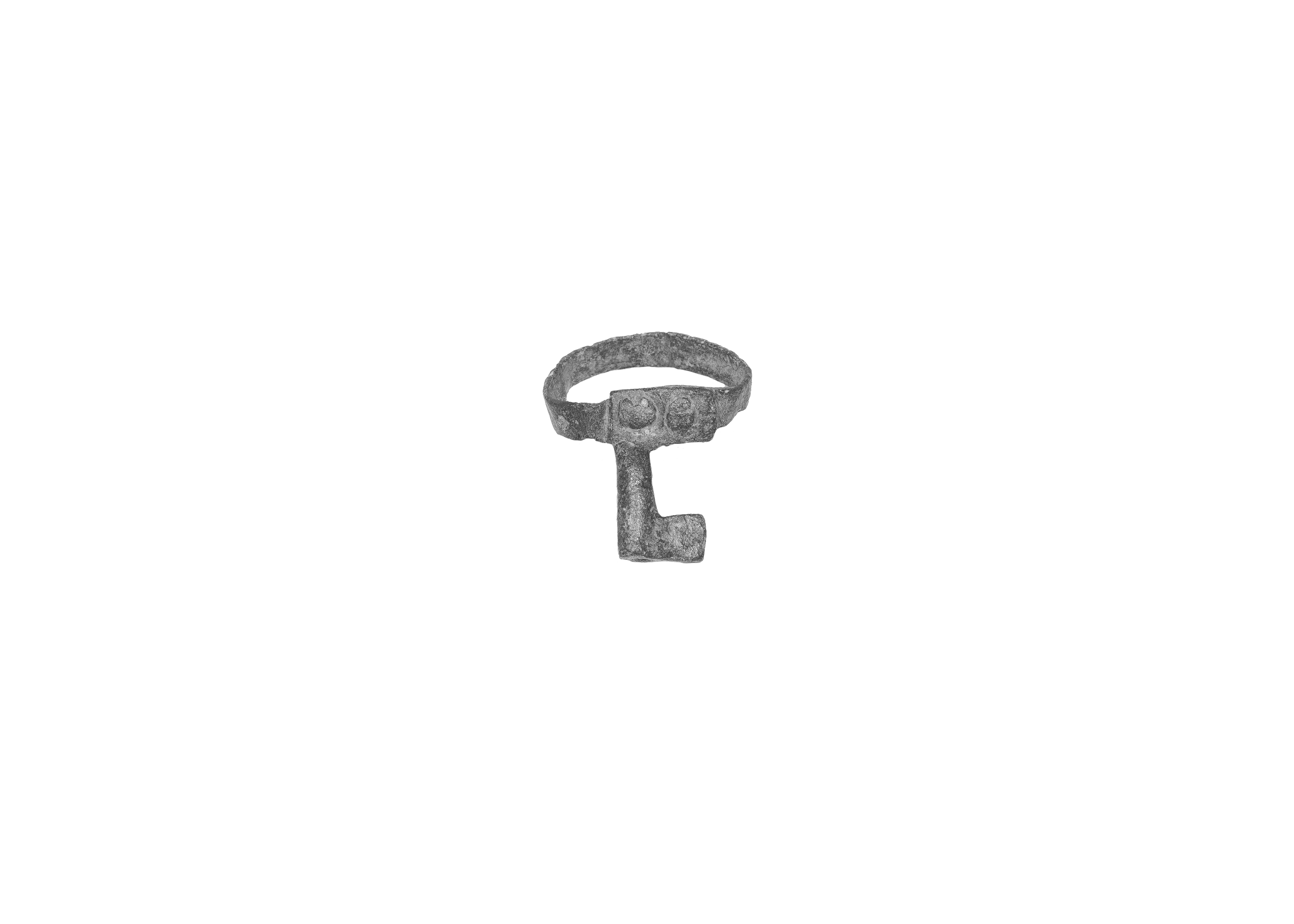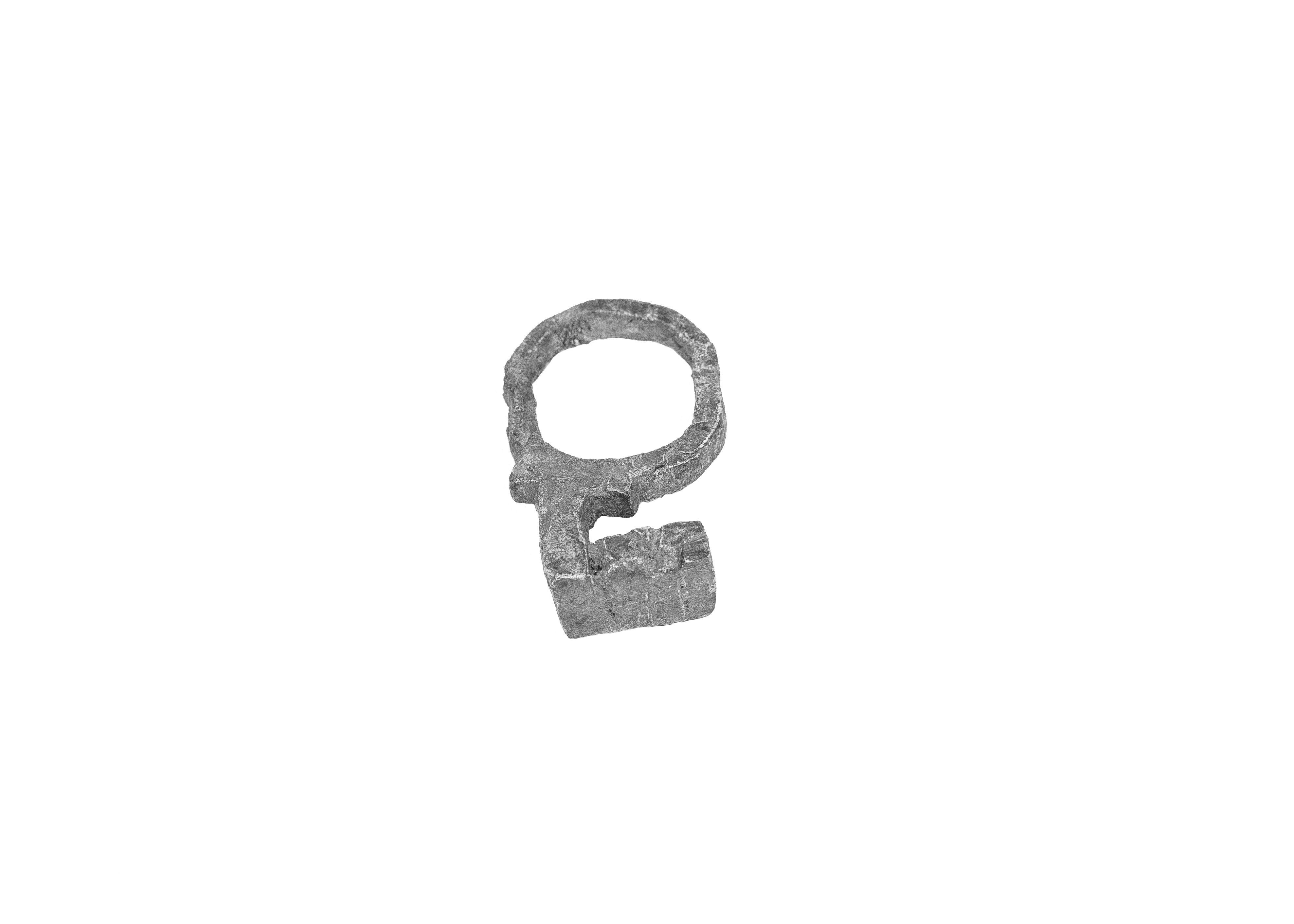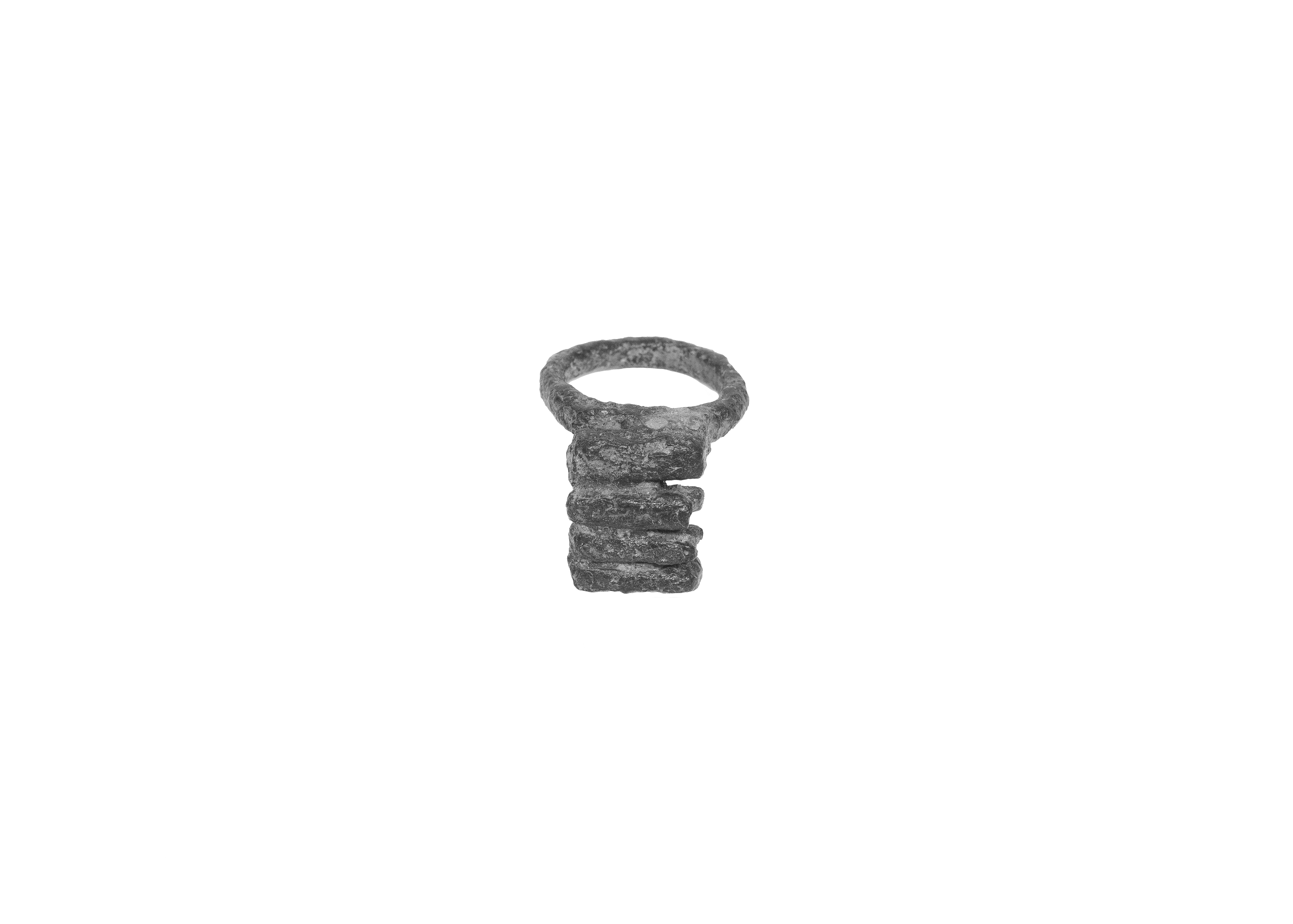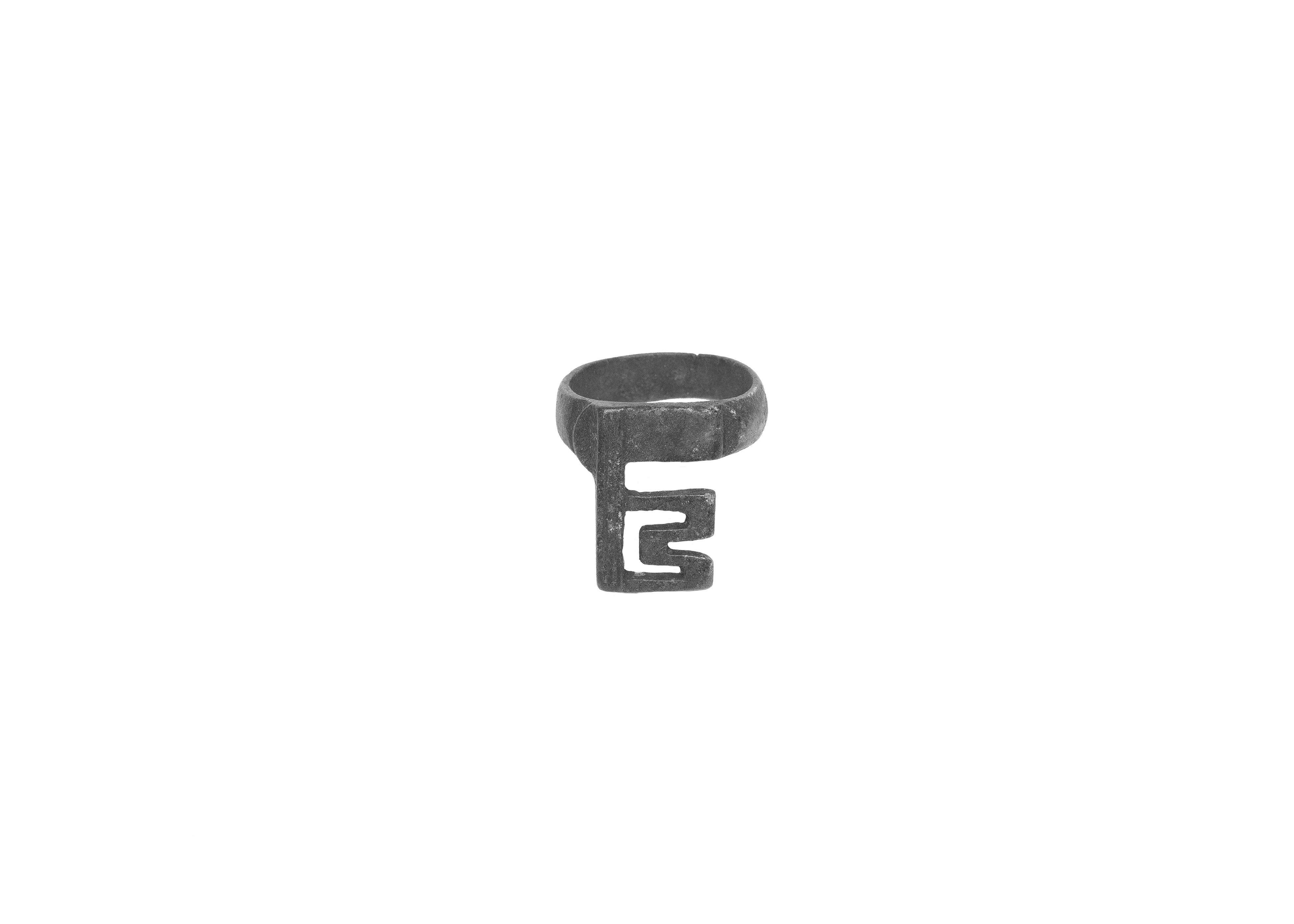Note bene – tutti i diametri fanno riferimento al diametro interno dell’anello
|
195
|
Size: ring diam. cm 1,7
Description and material: Roman ring key; bronze; simple cypher for rotary lock Origin and epoch: Imperial Rome, approx. I century A.D. |
201
|
Size: ring diam. 1,8; stem cm 1,5
Description and material: Roman female ring key; bronze; sophisticated cypher for rotary lock Origin and epoch: Imperial Rome, approx. I century A.D. Note: the ring looks damaged by an impact |
|
211
|
Size: ring diam. cm 1,7; stem cm 1,2
Description and material: Roman female ring key; bronze; simple cypher for rotary lock Origin and epoch: Imperial Rome, approx. I century A.D. |
217
|
Size: ring diam. cm 1,6; stem cm 1,7
Description and material: Roman female ring key; bronze; damaged cypher, for rotary lock Origin and epoch: Imperial Rome, approx. I century A.D. |
|
218
|
Size: ring diam. cm1,8
Description and material: Roman ring key; bronze; broken cypher, for rotary lock (?) Origin and epoch: Imperial Rome, approx. I century A.D. |
230
|
Size: ring diam. cm 1,4; stem cm 2,7
Description and material: Roman female key, hinged ring; bronze; sophisticated cypher for rotary lock Origin and epoch: Imperial Rome, approx. II century A.D. Note: the ring rotates freely |
|
247
|
Size: ring diam. cm 1,7; stem cm 3
Description and material: Roman hinged ring key with cuspid; bronze; sophisticated cypher for rotary lock Origin and epoch: Imperial Rome, approx. II century A.D. Note: Jackson makes reference to a Balkan origin; the ring rotates freely |
250
|
Size: ring diam. cm 1,7; stem cm 1
Description and material: Roman female ring key; iron; simple cypher for rotary lock, deeply oxidized Origin and epoch: Imperial Rome, approx. I century A.D. |
|
252
|
Size: ring diam. cm 1,8
Description and material: Roman ring key; bronze; sophisticated cypher for rotary lock Origin and epoch: Imperial Rome, approx. I century A.D. |
253
|
Size: ring diam. cm 2; stem cm 2,2
Description and material: Roman female hinged ring key; iron; simple cypher for rotary lock Origin and epoch: Imperial Rome, approx. II century A.D. Note: Jackson makes reference to a Syrian origin |
|
266
|
Size: ring diam. cm 1,5; stem cm 1,8
Description and material: Roman female hinged ring key with cuspid; bronze; simple cypher for rotary lock Origin and epoch: Imperial Rome, approx. II century A.D. Note: Jackson makes reference to a Syrian origin; the ring rotates freely |
284
|
Size: ring diam. cm 1,6
Description and material: Roman ring key; bronze; geometric shaped cypher, for rotary lock Origin and epoch: Imperial Rome, approx. I century A.D. |
|
292
|
Size: ring diam. cm 1,5; stem cm 1,6
Description and material: Roman female ring key; bronzo; simple cypher for rotary lock Origin and epoch: Imperial Rome, approx. I century A.D. |
293
|
Size: ring diam. cm 1,6; stem cm 1,5
Description and material: Roman female ring key; bronzo; simple cypher for rotary lock Origin and epoch: Imperial Rome, approx. I century A.D. |
|
296
|
Size: ring diam. cm 1,7; stem cm 1
Description and material: Roman female ring key; bronze; simple cypher for rotary lock Origin and epoch: Imperial Rome, approx. I century A.D. |
302
|
Size: ring diam. cm 1,8; stem cm 2,2
Description and material: Roman iron faceted ring key, female; simple cypher for rotary lock Origin and epoch: Imperial Rome, approx. I century A.D. |
|
313
|
Size: ring diam. cm 1,9; stem cm 1,6
Description and material: Roman iron decorated ring key; female; comb like cypher for rotary lock Origin and epoch: Imperial Rome, approx. I century A.D. |
336
|
Size: ring diam. cm 2,4.; stem cm 1,3
Description and material: Roman ring key; bronze; damaged cypher for lift-shift lock Origin and epoch: Imperial Rome, approx. I century A.D. |
|
338
|
Size: ring diam. cm 2; stem cm 1,8
Description and material: Roman bronze hinged ring key; female; simple cypher for rotary lock Origin and epoch: Imperial Rome, approx. II century A.D. Note: rust is locking the ring |
348
|
Size: stem cm 2,6
Description and material: Roman key, handle with hole; bronze; cypher for multiple spring lock Origin and epoch: Imperial Rome, approx. II century A.D. |
|
352
|
Size: ring diam. cm 1,7; stem cm 2,5
Description and material: Roman female ring key with geometric decorations; silver; sophisticated cypher for rotary lock Origin and epoch: Imperial Rome, approx. I century A.D. Note: key n. 377 comes from the same cast |
353
|
Size: ring diam. cm 1,8; stem cm 2
Description and material: Roman hinged ring key; iron; simple cypher for rotary lock Origin and epoch: Imperial Rome, approx. II century A.D. Note: Jackson declares a Lincolnshire origin- UK, probably due to Emperor Claudius Roman occupation, I century A.D. |
|
365
|
Size: ring diam. cm 1,7; stem cm 2,5
Description and material: Roman ring key; bronze; sophisticated cypher for rotary lock Origin and epoch: Imperial Rome, approx. I century A.D. |
377
|
Size: ring diam. cm 1,7; stem cm 2,5
Description and material: Roman female ring key with geometric decorations; bronze; sophisticated cypher for rotary lock Origin and epoch: Imperial Rome, approx. I century A.D. Note: key n. 352 comes from the same cast |
390
|
Size: ring diam. cm 2; stem cm 4,3
Description and material: Roman oxidized hinged ring key; iron; simple cypher for rotary lock Origin and epoch: Imperial Rome, approx. II century A.D. Note: The ring is locked, due to rust; dimensions are quite large for a ring key |
|
399
|
Size: ring diam. cm 1,9; stem cm 2,2
Description and material: Roman hinged ring key; iron; simple cypher for rotary lock Origin and epoch: Imperial Rome, approx. II century A.D. Note: the ring rotates freely |
417
|
Size: ring diam. cm 1; stem cm 1,5
Description and material: Roman female hinged ring key; iron; shaped handle; simple cypher for rotary lock Origin and epoch: Imperial Rome, approx. II century A.D. Note: the ring rotates freely, probably the ring was tied to a string |
|
418
|
Size: ring diam. cm 2,2; stem cm 2 + 1,5
Description and material: lift and shift ring key; the shank is terminated by a closed hand, grasping the ring; 3 pins cypher; bronze Origin and epoch: Rome, I century A.D. Note: The ring rotates freely |
431
|
Size: ring diam. cm 1,9; stem cm 1,7
Description and material: Roman hinged ring key; bronze; simple cypher for rotary lock Origin and epoch: Imperial Rome, approx. II century A.D. Note: The ring rotates freely |
|
432
|
Size: ring diam. cm
Description and material: Roman ring key; iron; simple cypher for rotary lock Origin and epoch: Imperial Rome, approx. I century A.D. Note: the ring rotates freely |
465
|
Size: ring diam. cm 1,8; stem cm 2 + 1
Description and material: female ring key, bronze, with moving ring; simple cypher Origin and epoch: Rome, I century A.D. |
|
555
|
Size: ring diam. cm 1,9; stem cm 2
Description and material: Roman hinged ring key; bronze; front and side cypher with two holes, for rotary lock Origin and epoch: Imperial Rome, approx. III (?) century A.D. Note: the front and side map may be typical of a later epoch |
624
|
Size: ring diam. cm
Description and material: Roman female ring key; bronze; simple cypher for rotary lock Origin and epoch: Imperial Rome, approx. I century A.D. |
|
632
|
Size: ring diam. cm 1,7; stem cm 1,2
Description and material: Roman female ring key; iron; comb like cypher for rotary lock Origin and epoch: Imperial Rome, approx. I century A.D. Note: see also key 232 |
647
|
Size: ring diam. cm 1,7; stem cm 0,9
Description and material: Roman female ring key; iron; simple cypher for rotary lock Origin and epoch: Imperial Rome, approx. I century A.D. |
|
790
|
Size: stem cm 3,2
Description and material: female ring type rotary key, with damaged eyelet and missing ring; sophisticated cypher, but probably only as a decoy; bronze Origin and epoch: Roma imperiale, II secolo d.C. Note: D. Jackson suggests that the sophisticated cypher was a decoy for an observer, looking at the key, suspended at the neck of the owner. |
793
|
Size: ring diam. cm 1,6; stem cm 3
Description and material: Roman mobile ring key with cuspid; bronze; various pins cypher for rotary lock Origin and epoch: Imperial Rome, approx. I century A.D. |
|
855
|
Size: ring diam. cm 1,2; stem cm 2
Description and material: Roman shaped ring key with cuspid; bronze; missing cypher, for rotary lock Origin and epoch: Imperial Rome, approx. I century A.D. |
1159
|
Size: ring diam. cm 1,6; stem cm 1,7
Description and material: Roman female hinged ring key; iron; sophisticated shape of the handle; damaged cypher and difficult to reconstruct Origin and epoch: Imperial Rome, approx. II century A.D. |
|
1303
|
Size: ring diam. cm 1,7; stem cm 1,7
Description and material: Roman ring key; shaped from bronze sheet; stem and map fastened with 2 rivets; simple cypher for rotary lock Origin and epoch: Imperial Rome, approx. I century A.D. Note: deformed ring |
1306
|
Size: ring diam. cm 2; stem cm 1,2
Description and material: Roman ring key; bronze (?); 5 (?) coding pins cypher for lift-shift lock Origin and epoch: Imperial Rome, approx. I century A.D. |
|
1389
|
Size: ring diam. cm 1,8; stem cm 1,4
Description and material: Roman ring key; iron; six (?) coding pins cypher for lift-shift lock Origin and epoch: Imperial Rome, approx. I century A.D. Note: cypher damaged by rust |
1513
|
Size: ring diam. cm 1,8
Description and material: Roman ring key; bronze; geometric shaped cypher, for rotary lock Origin and epoch: Imperial Rome, approx. I century A.D. |



